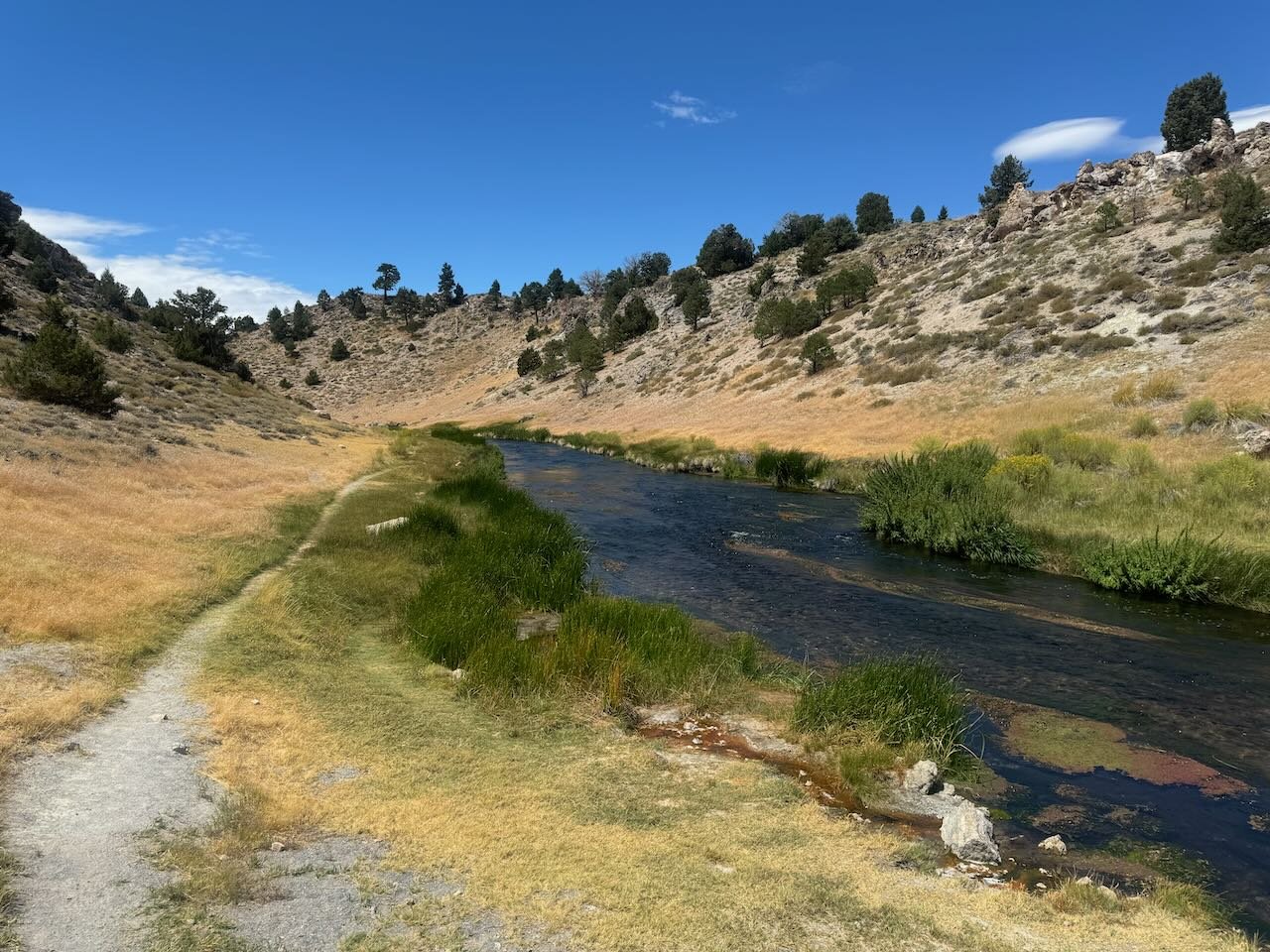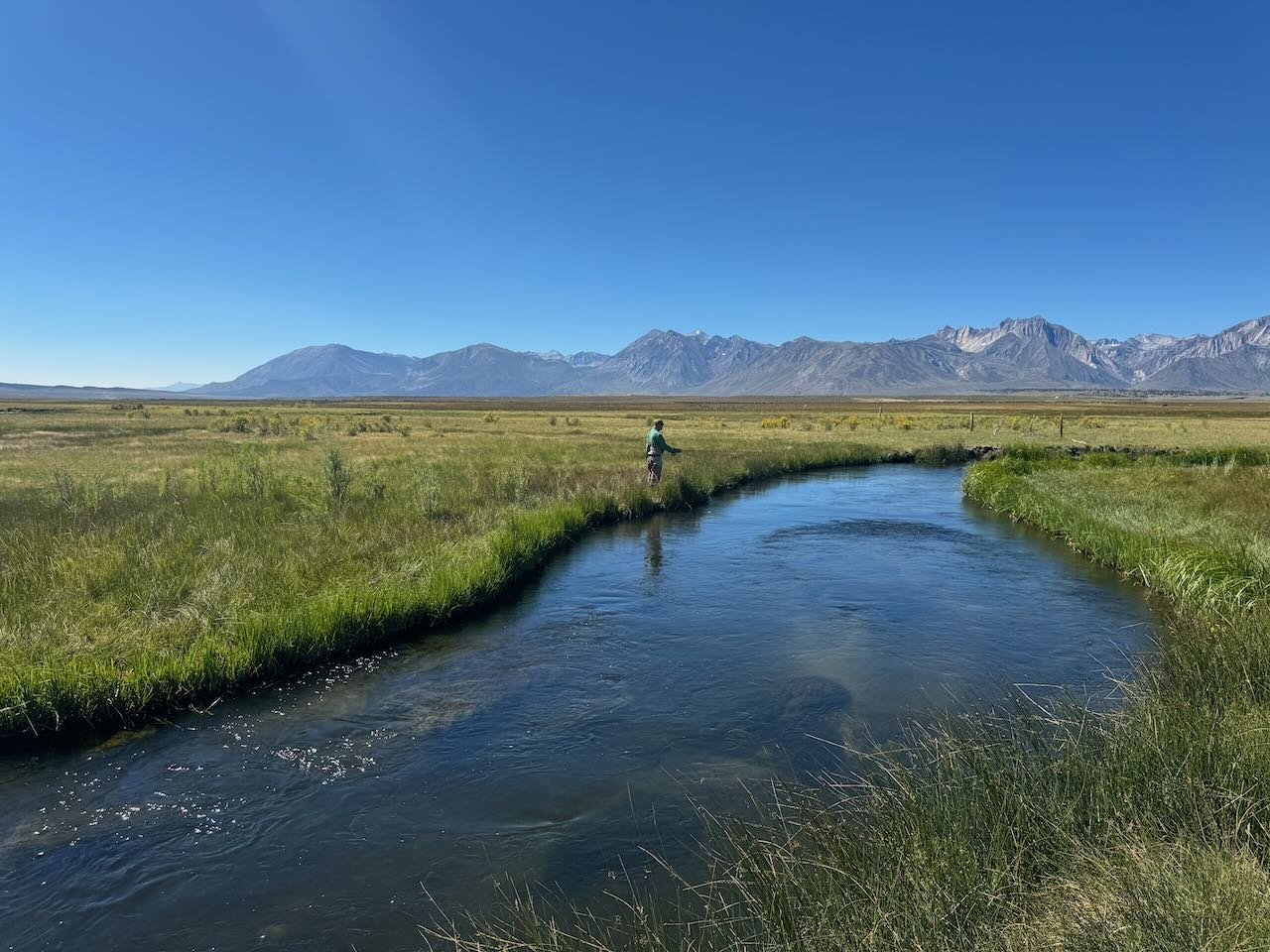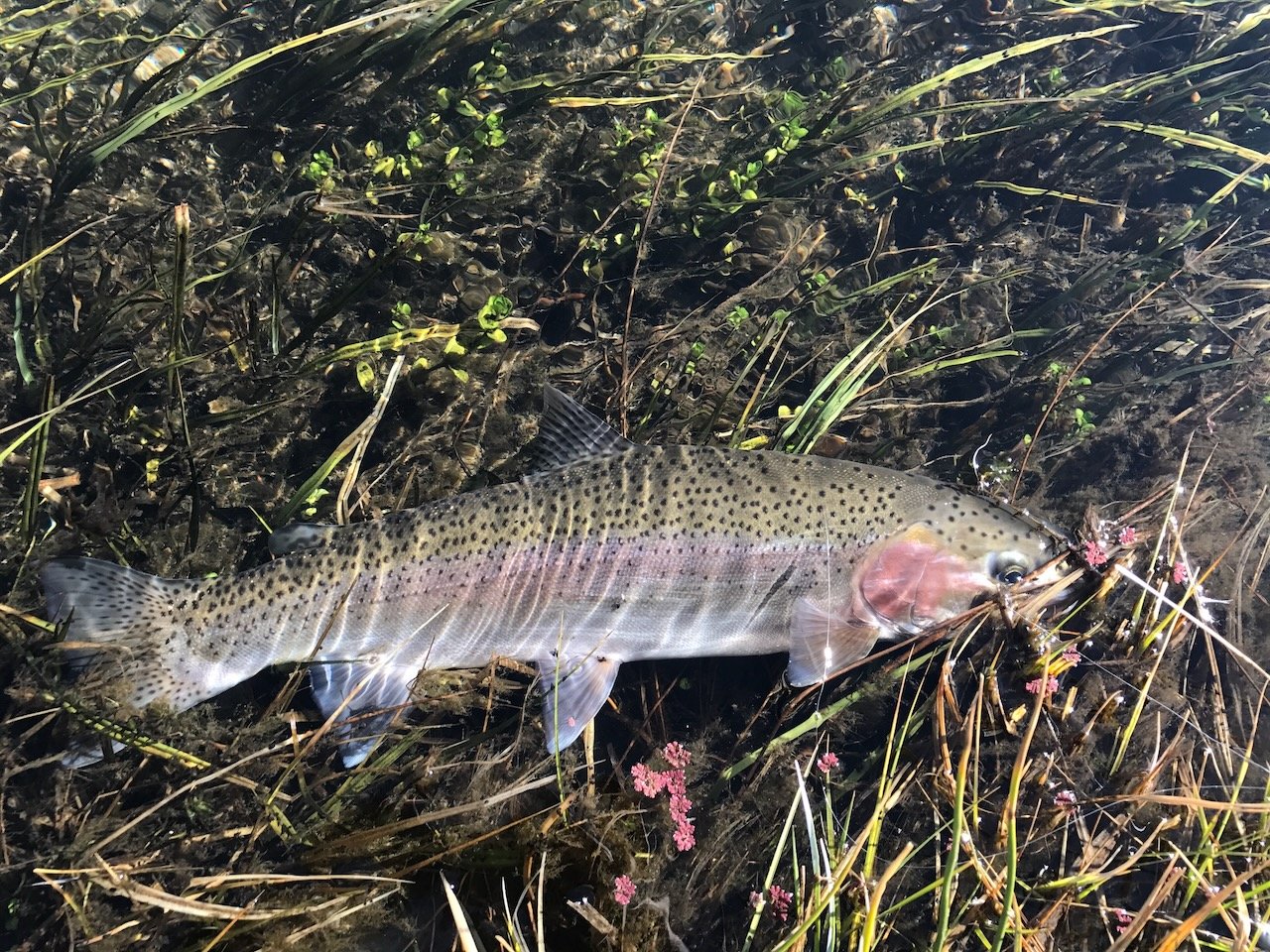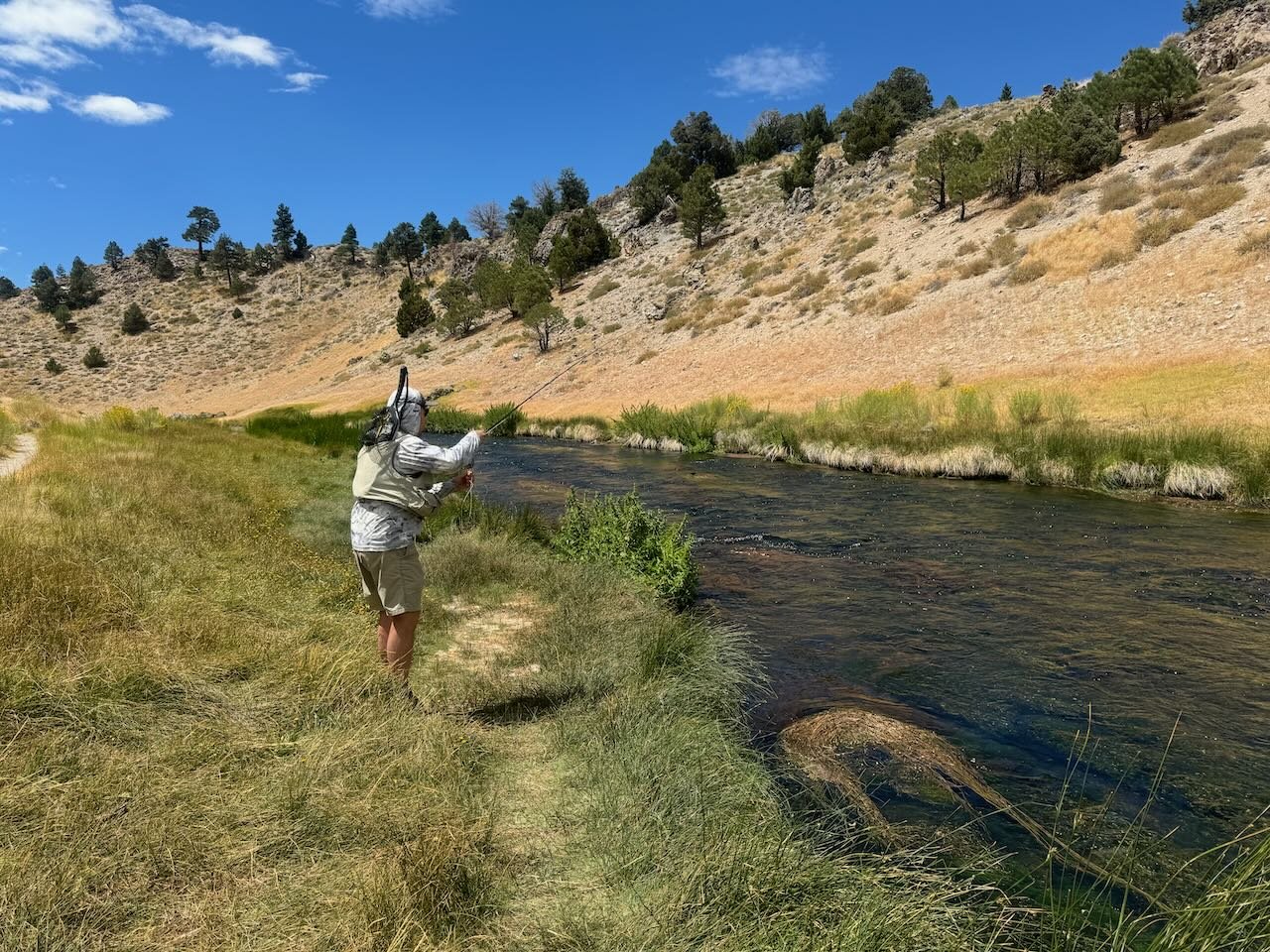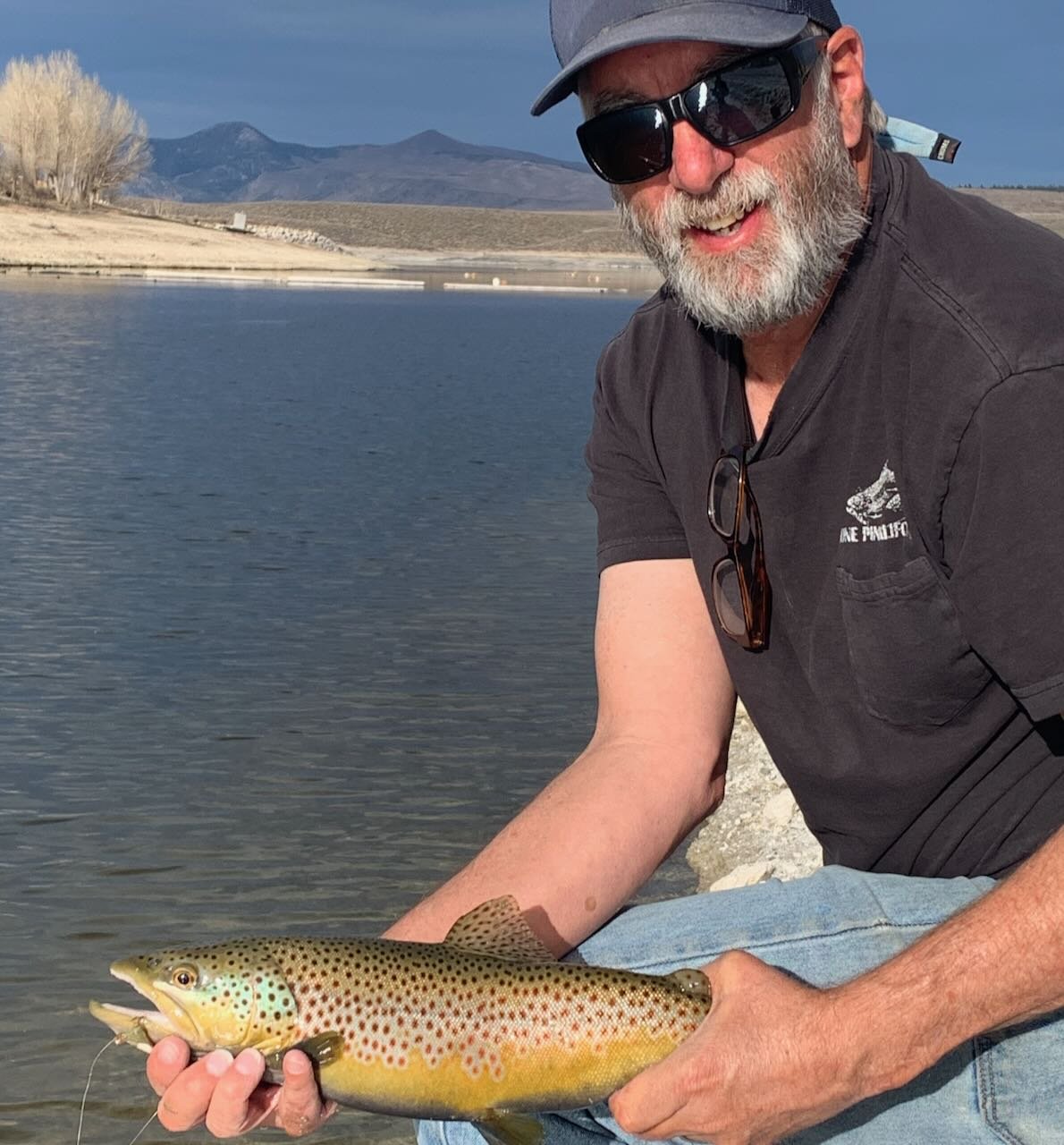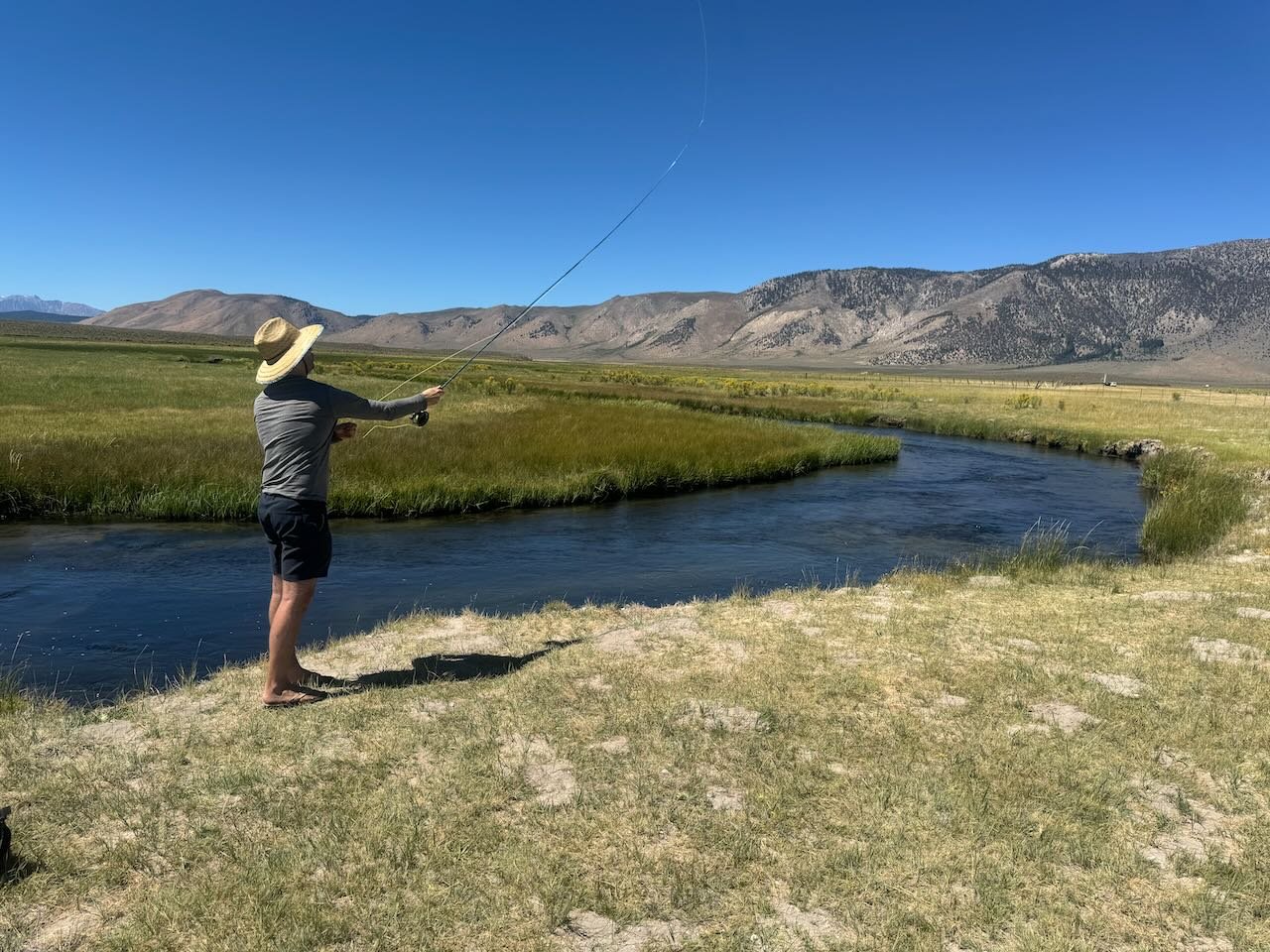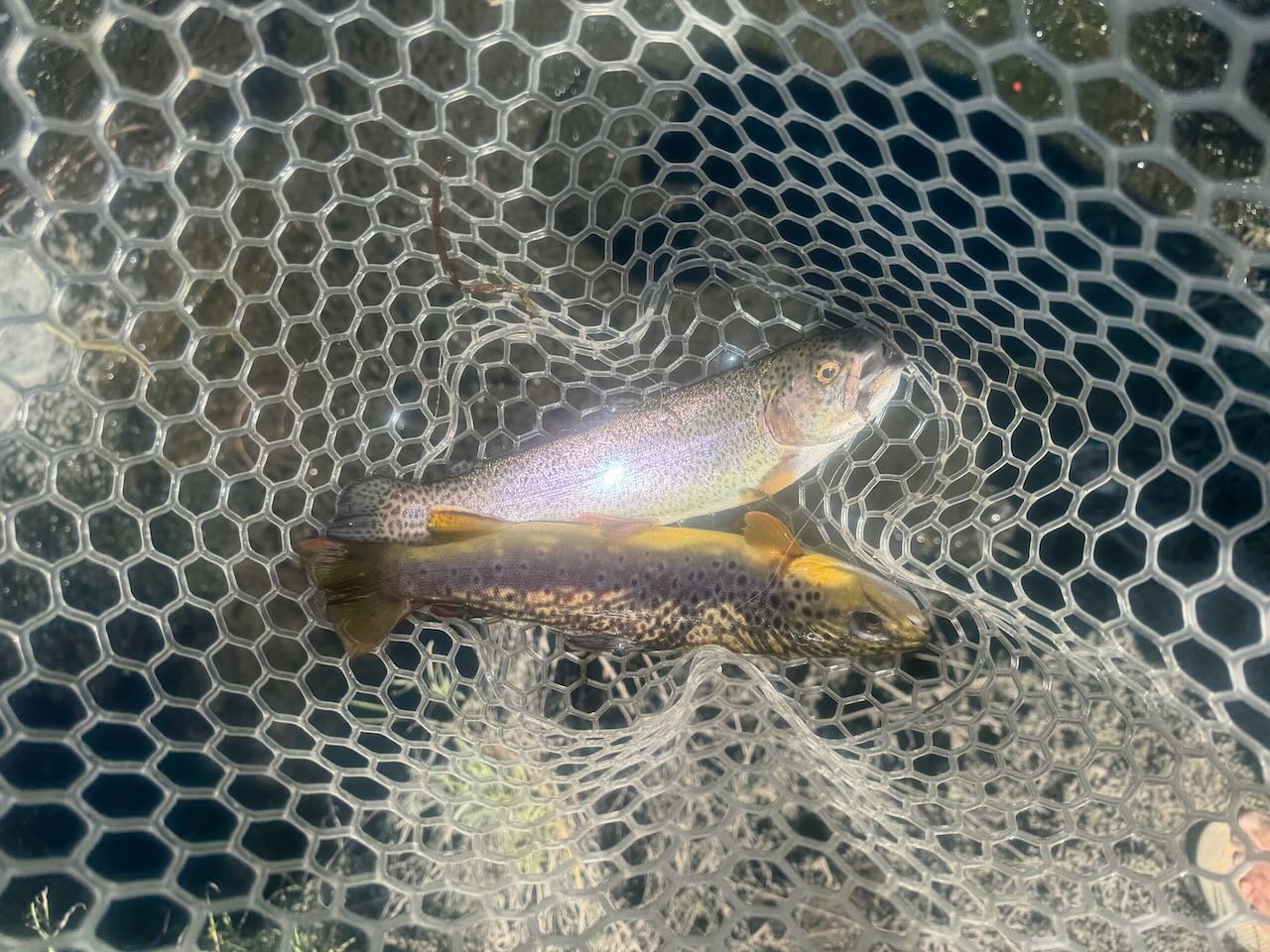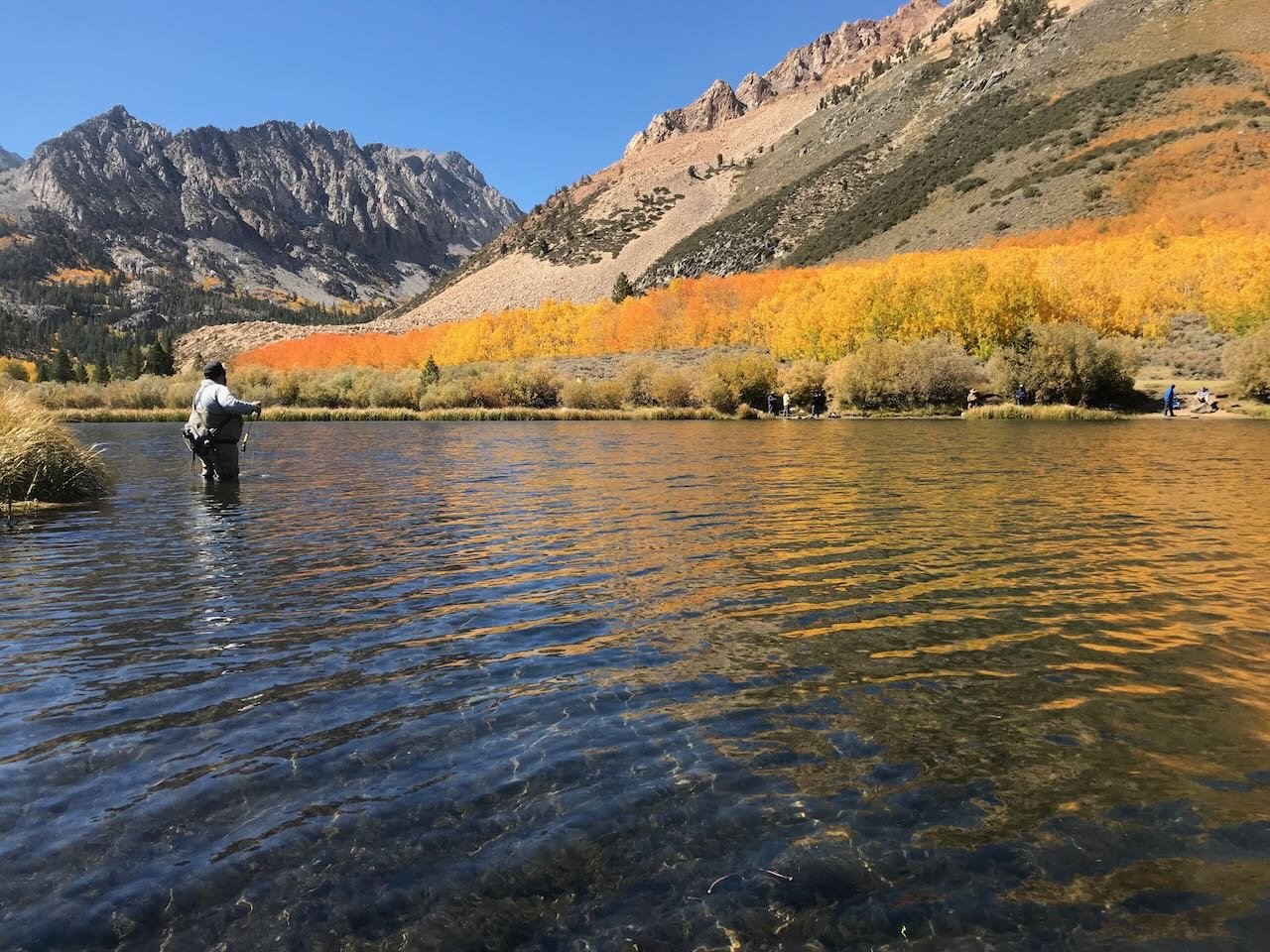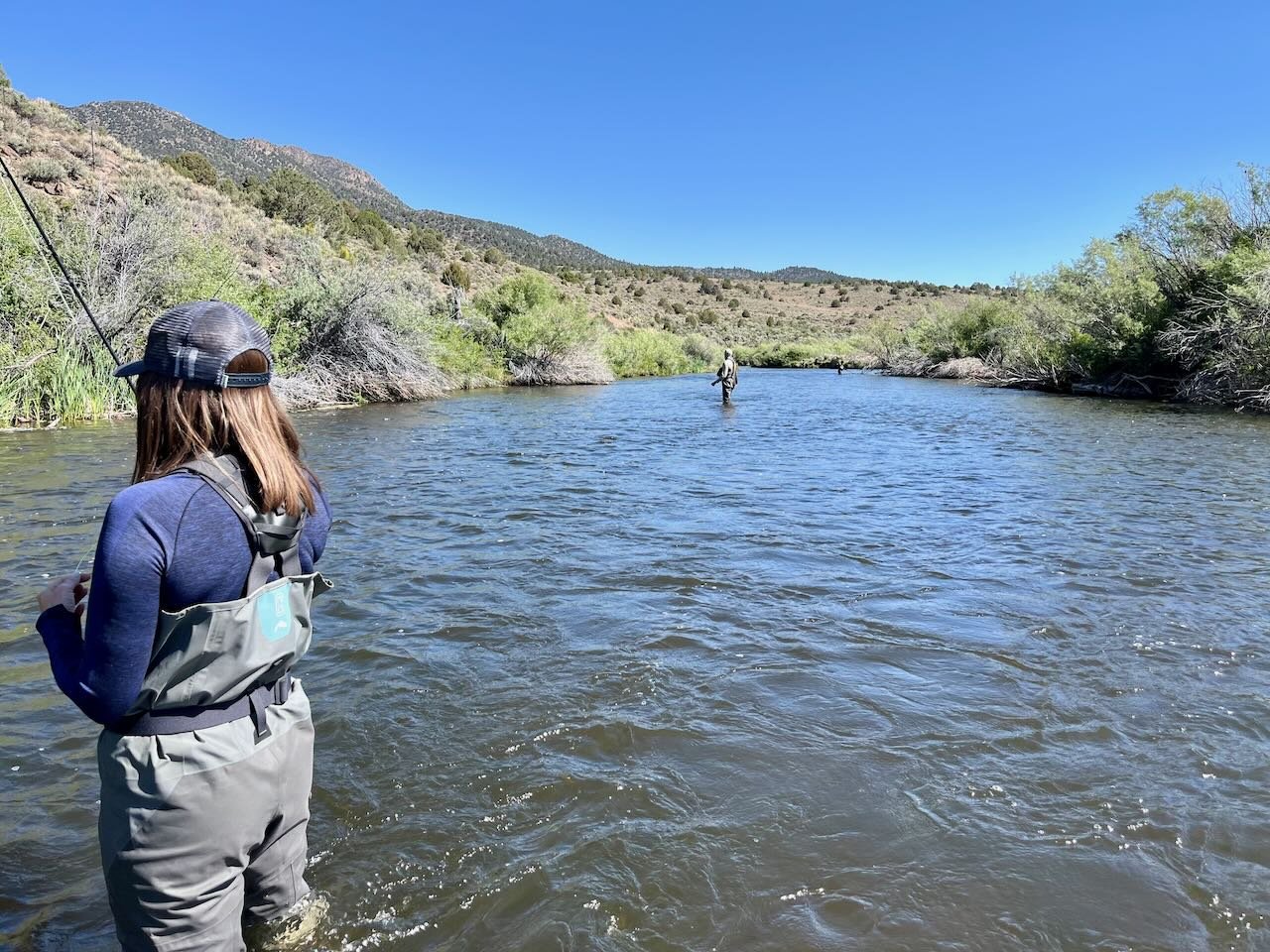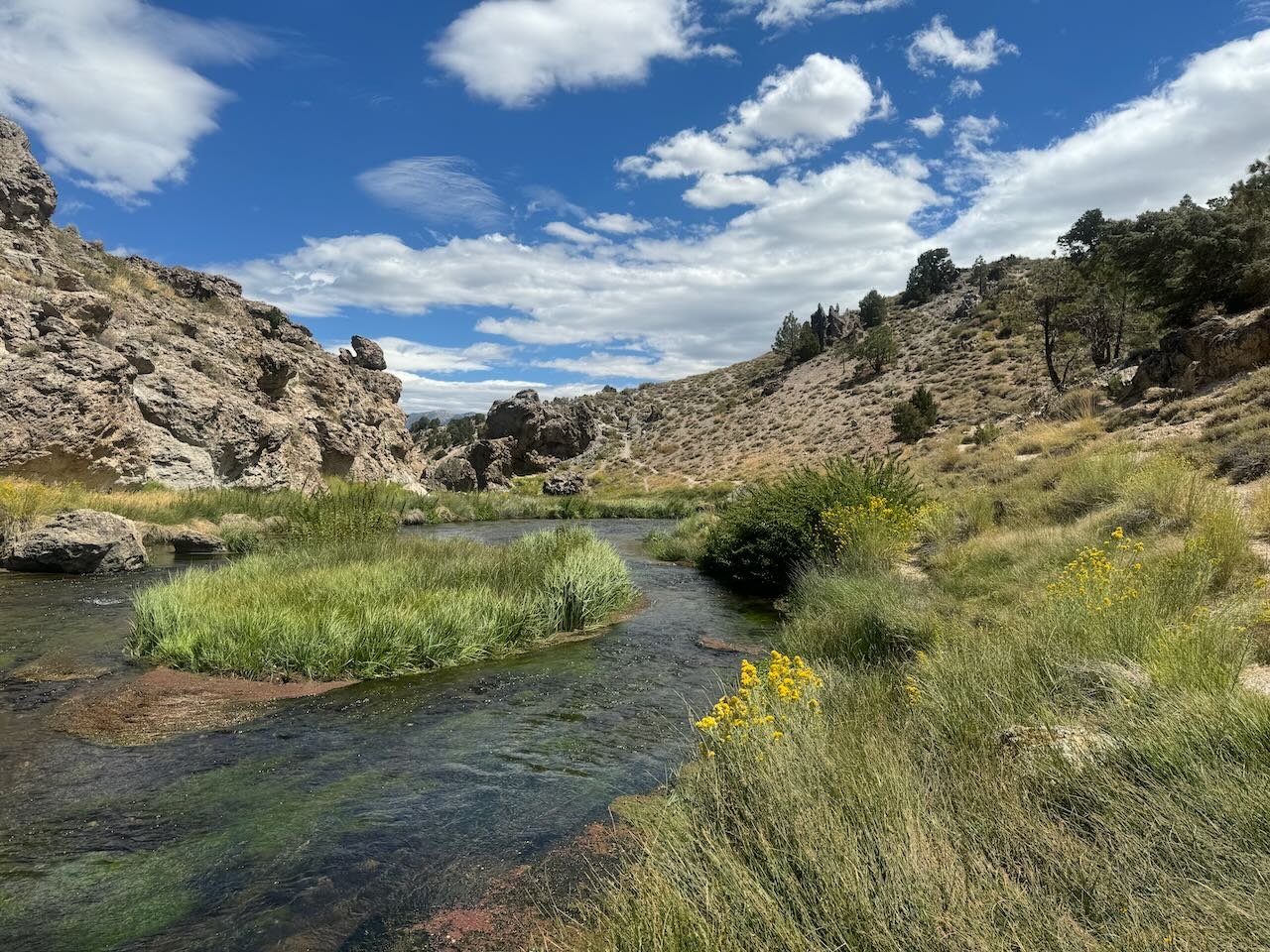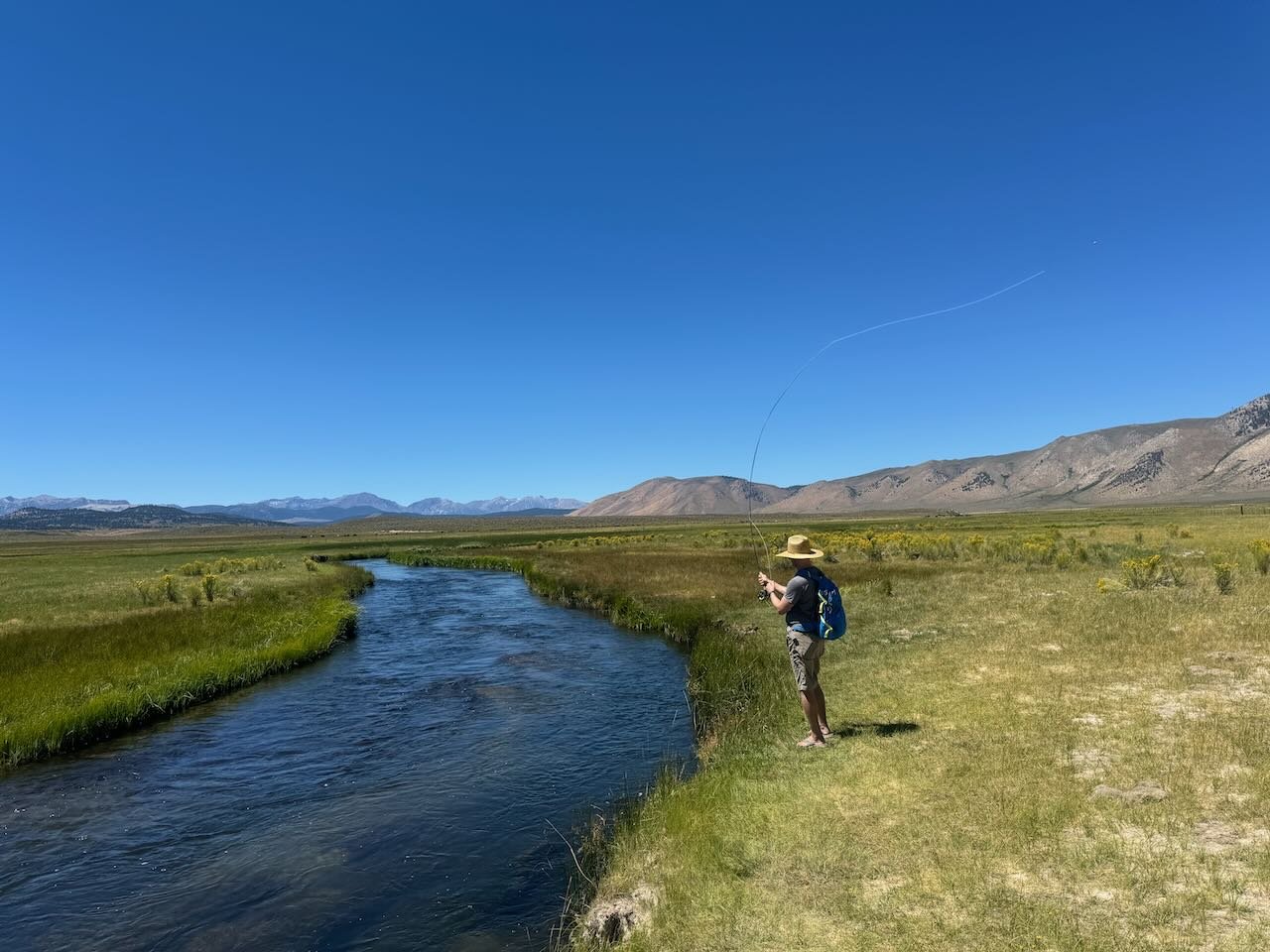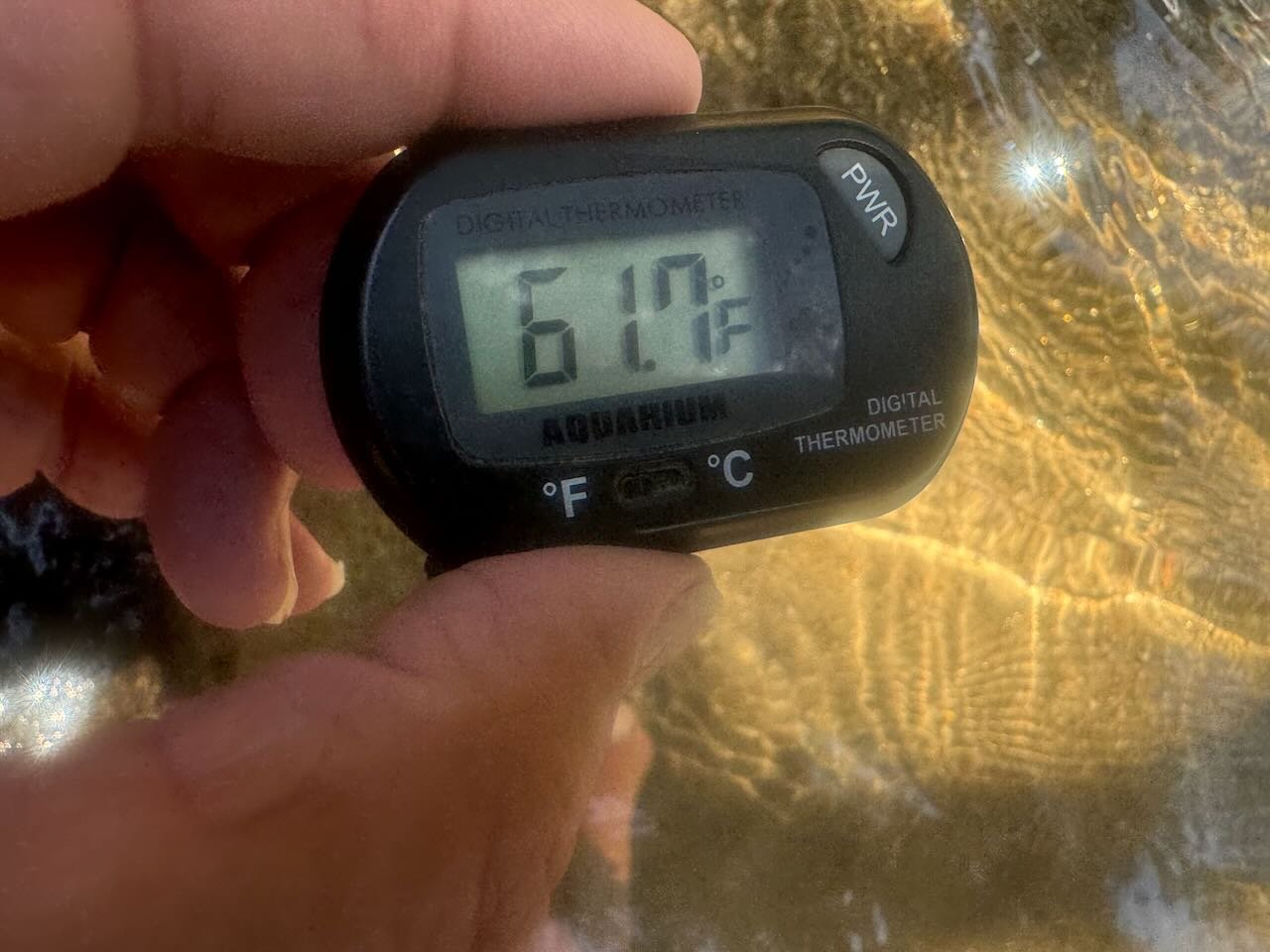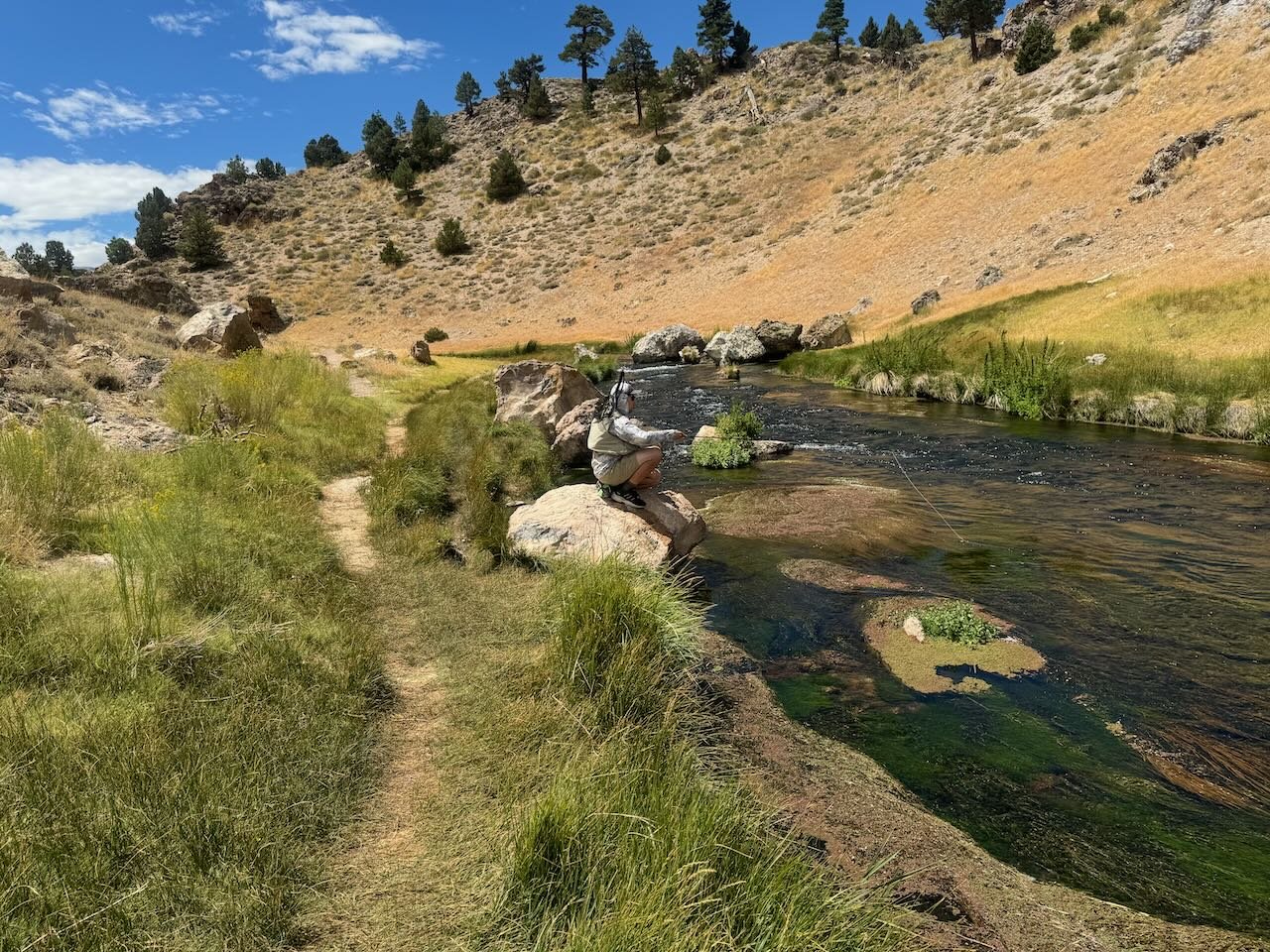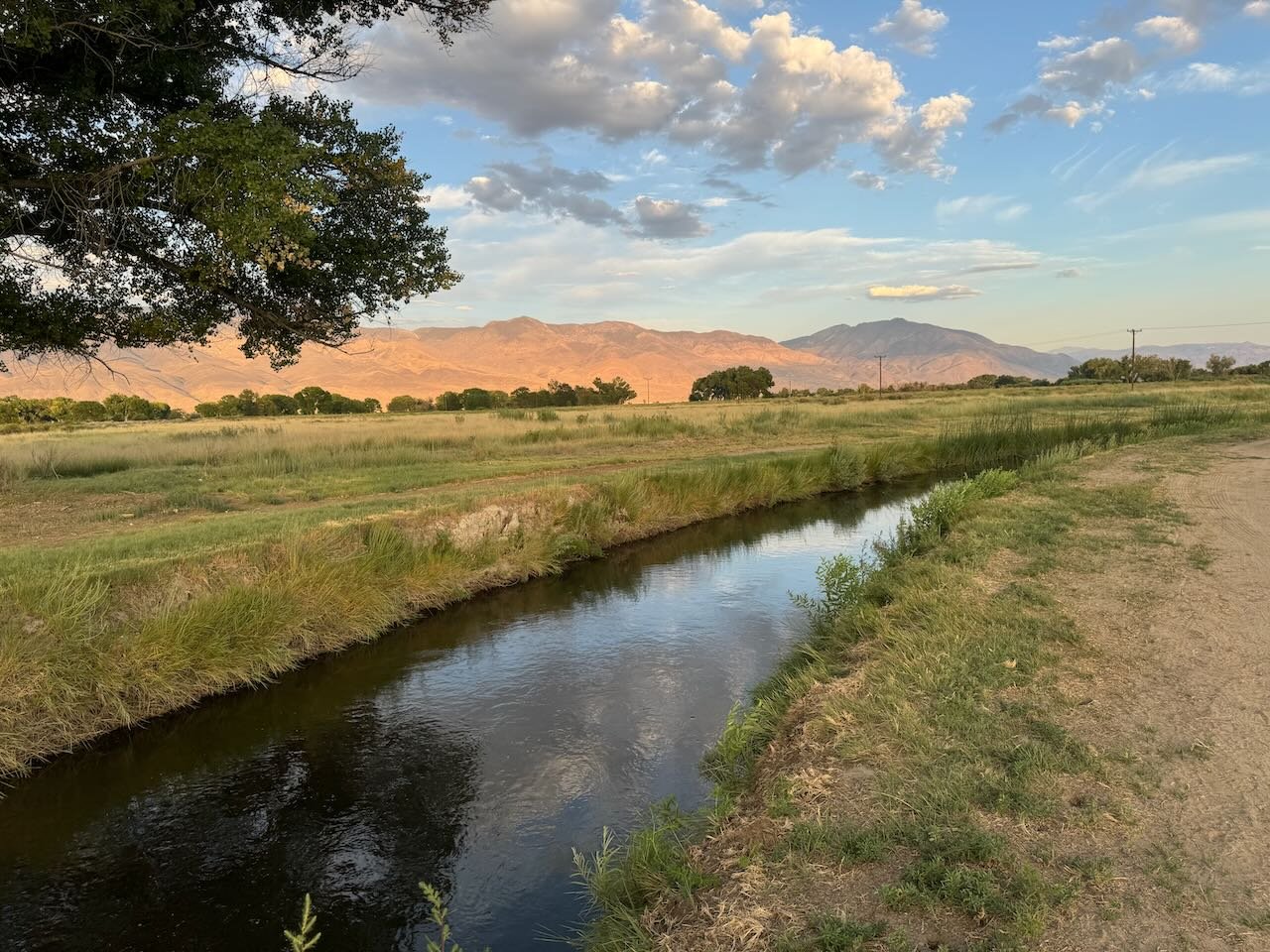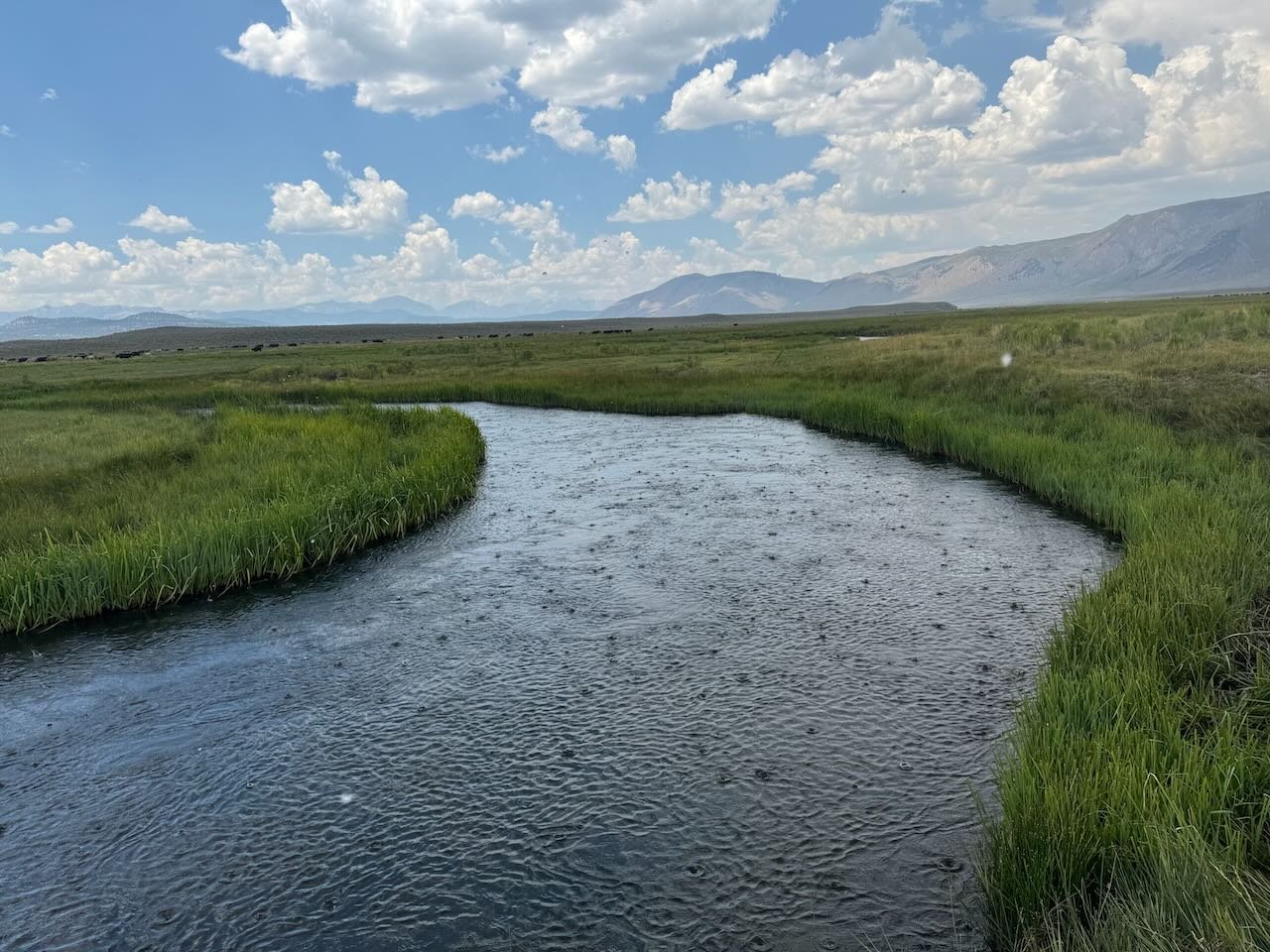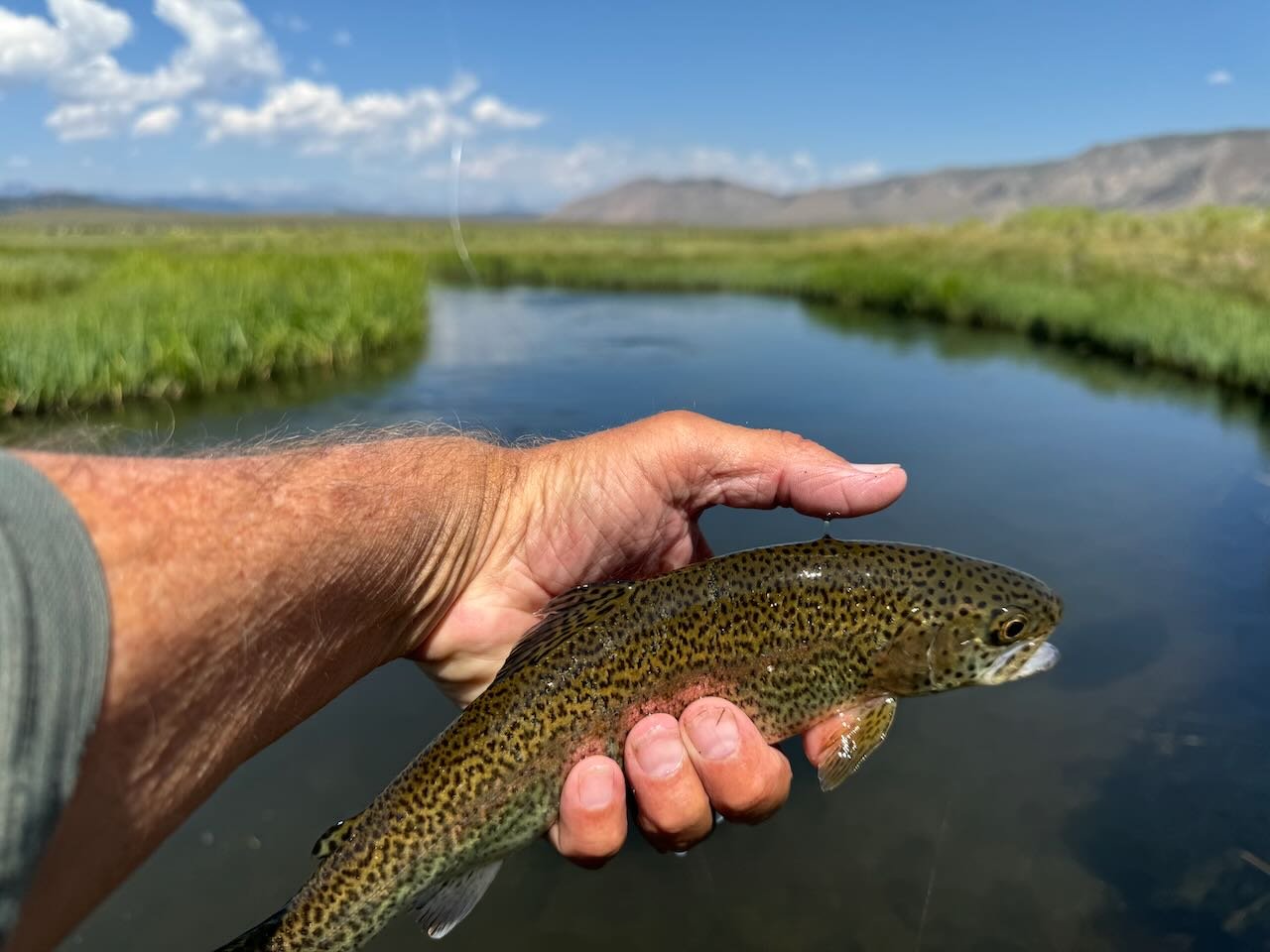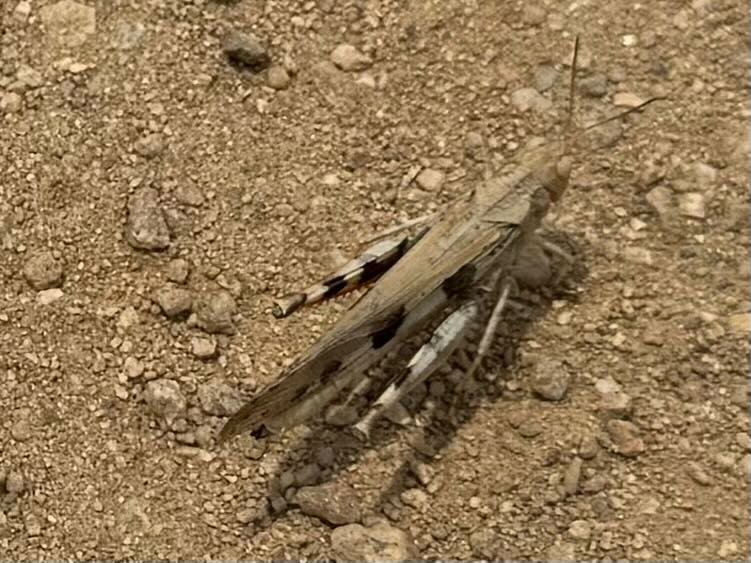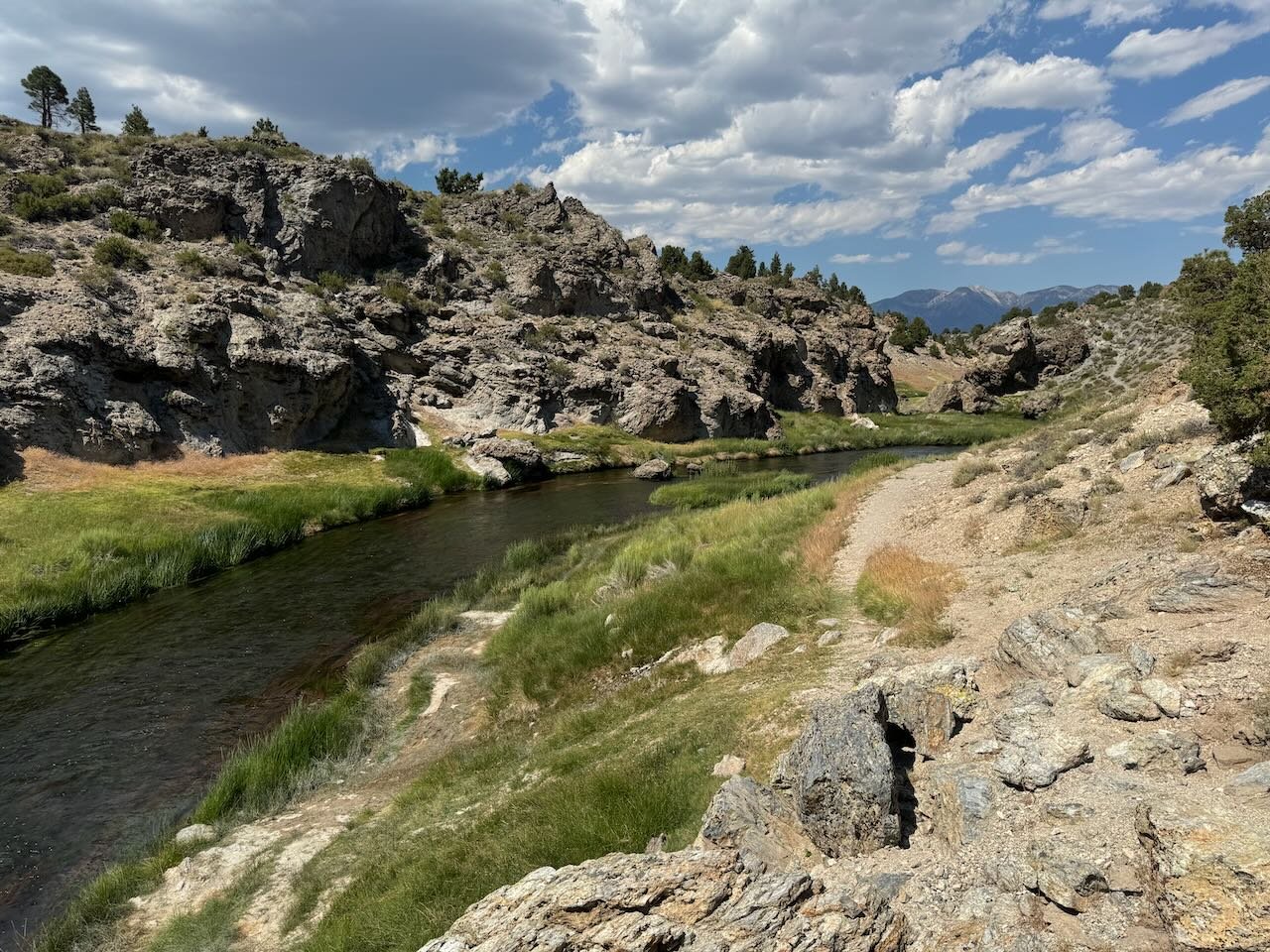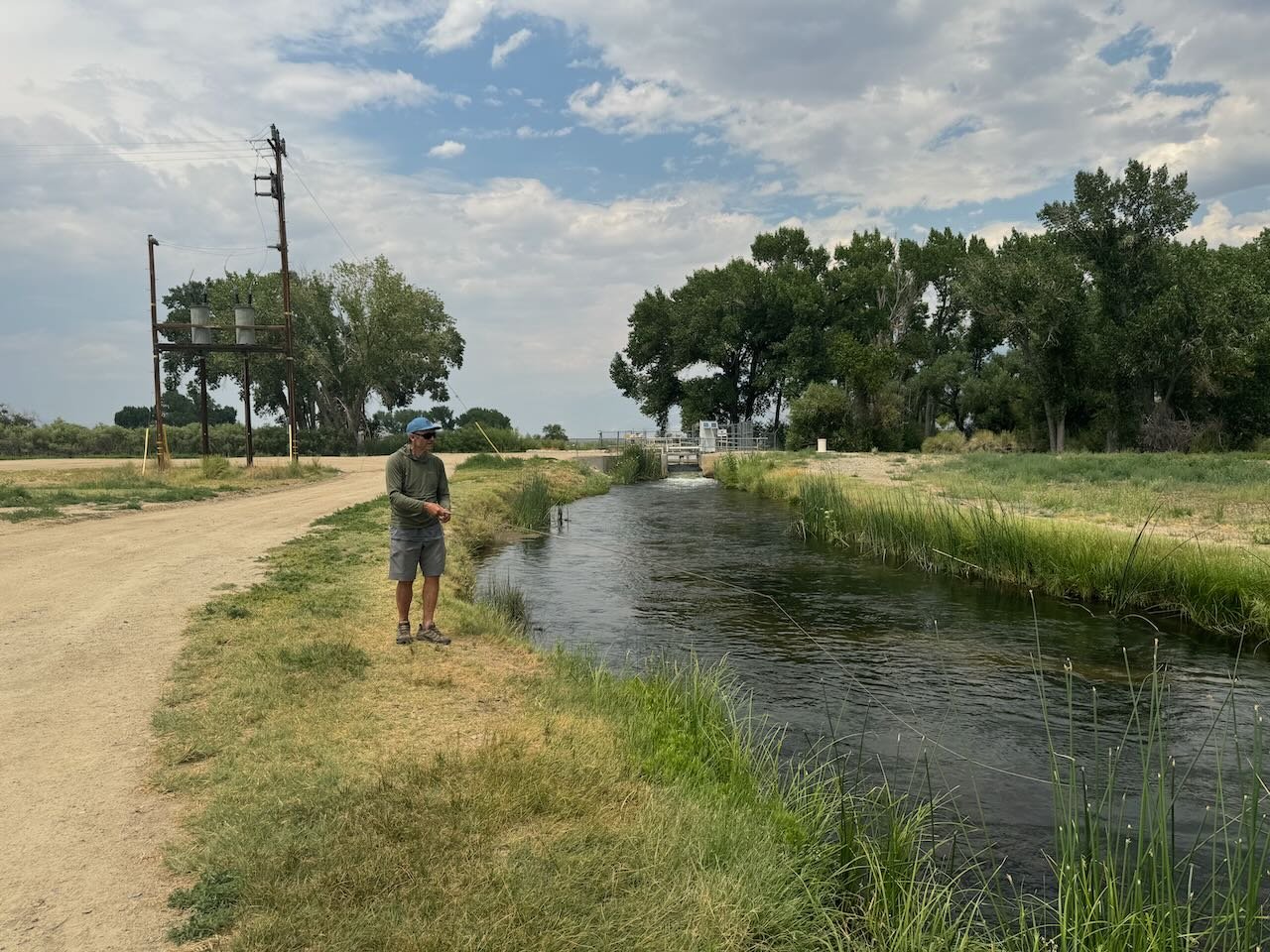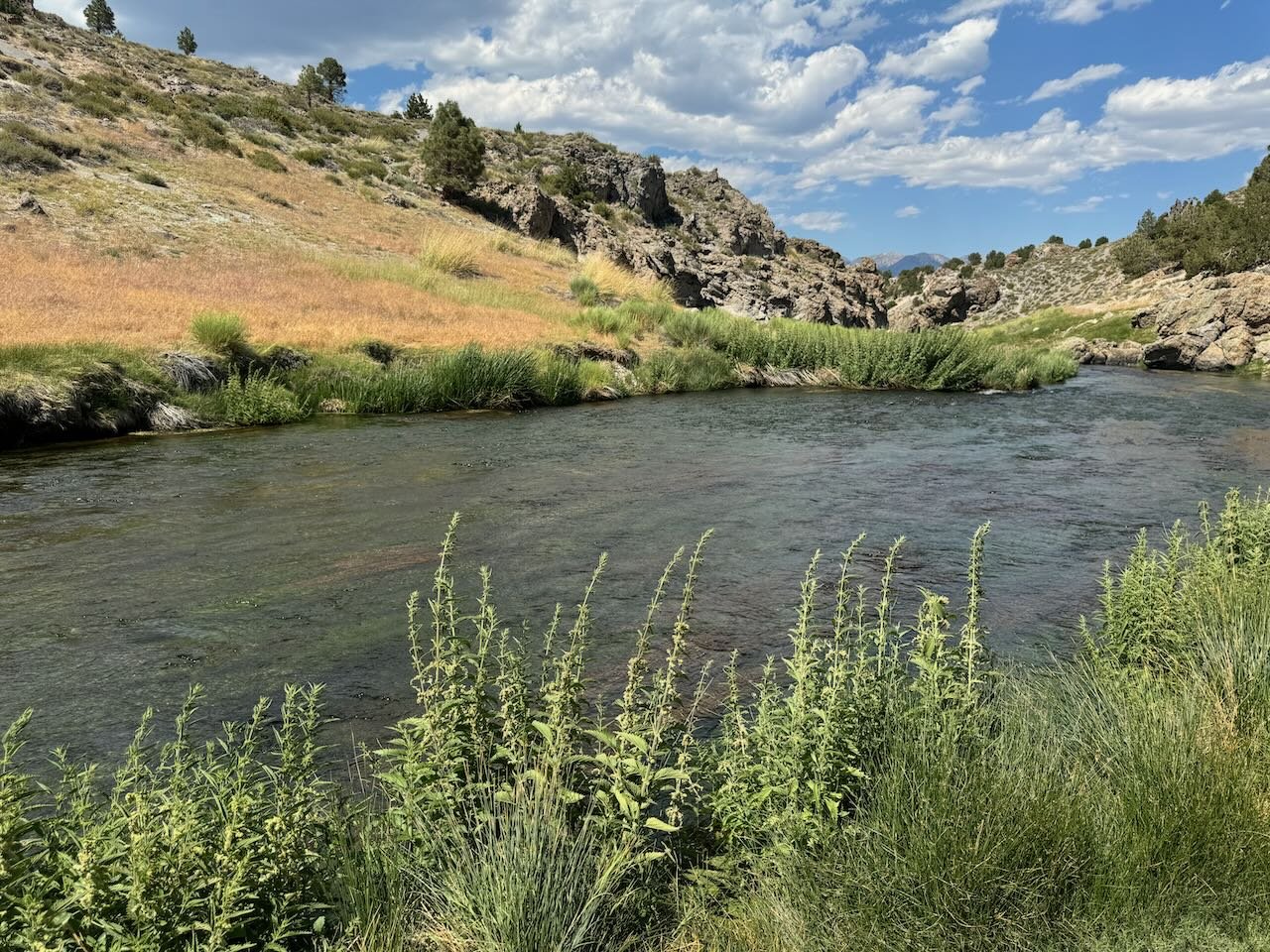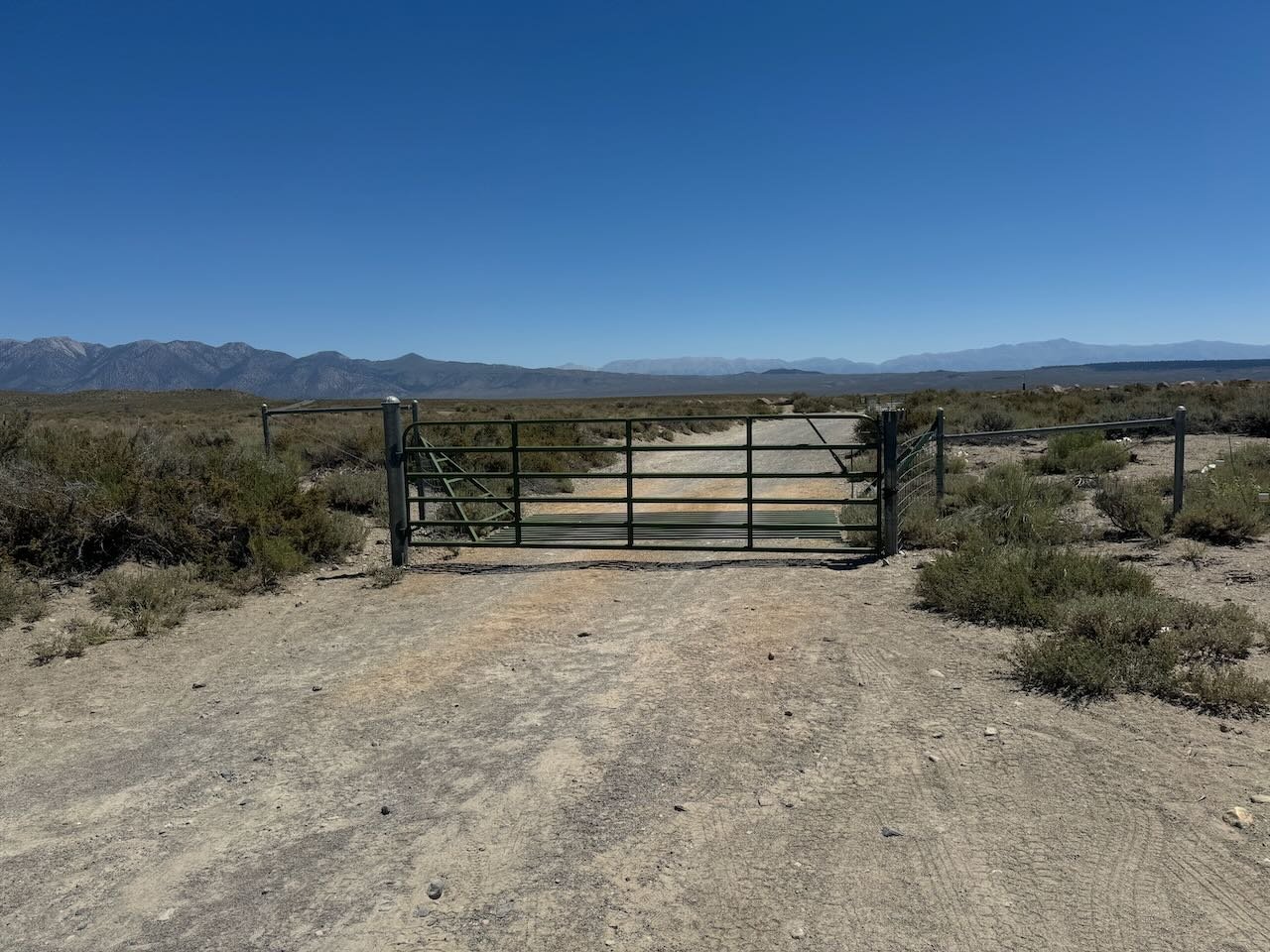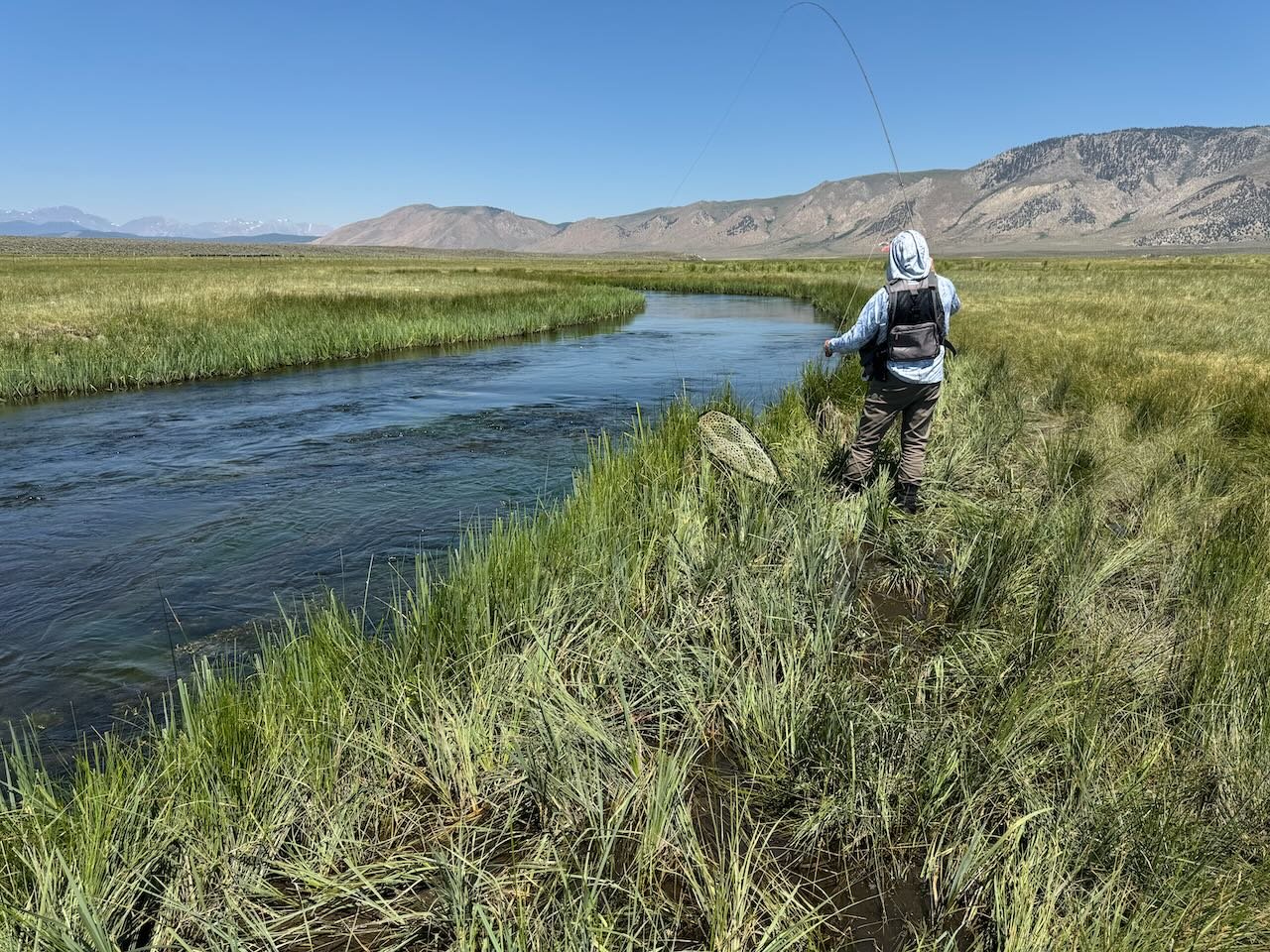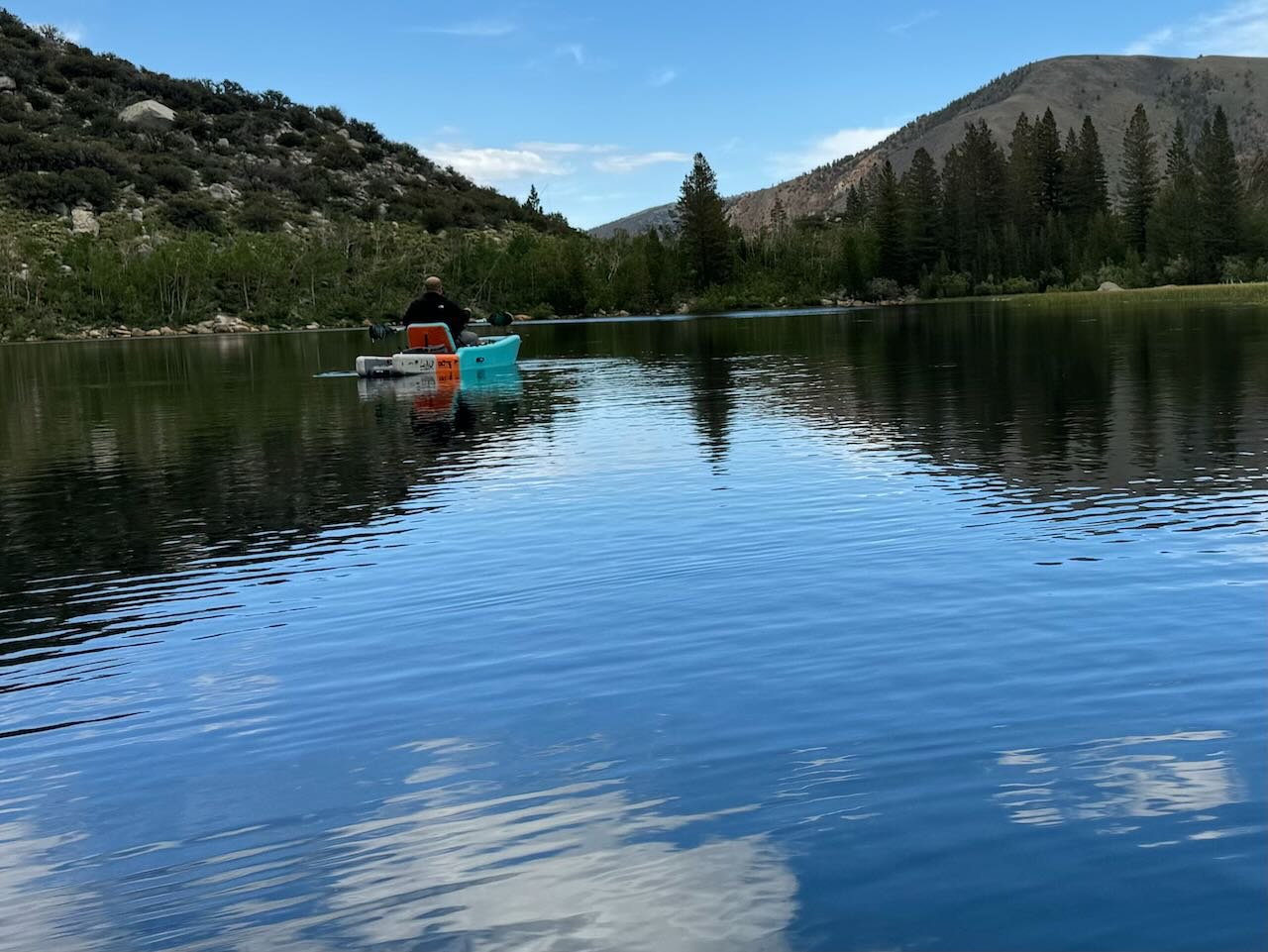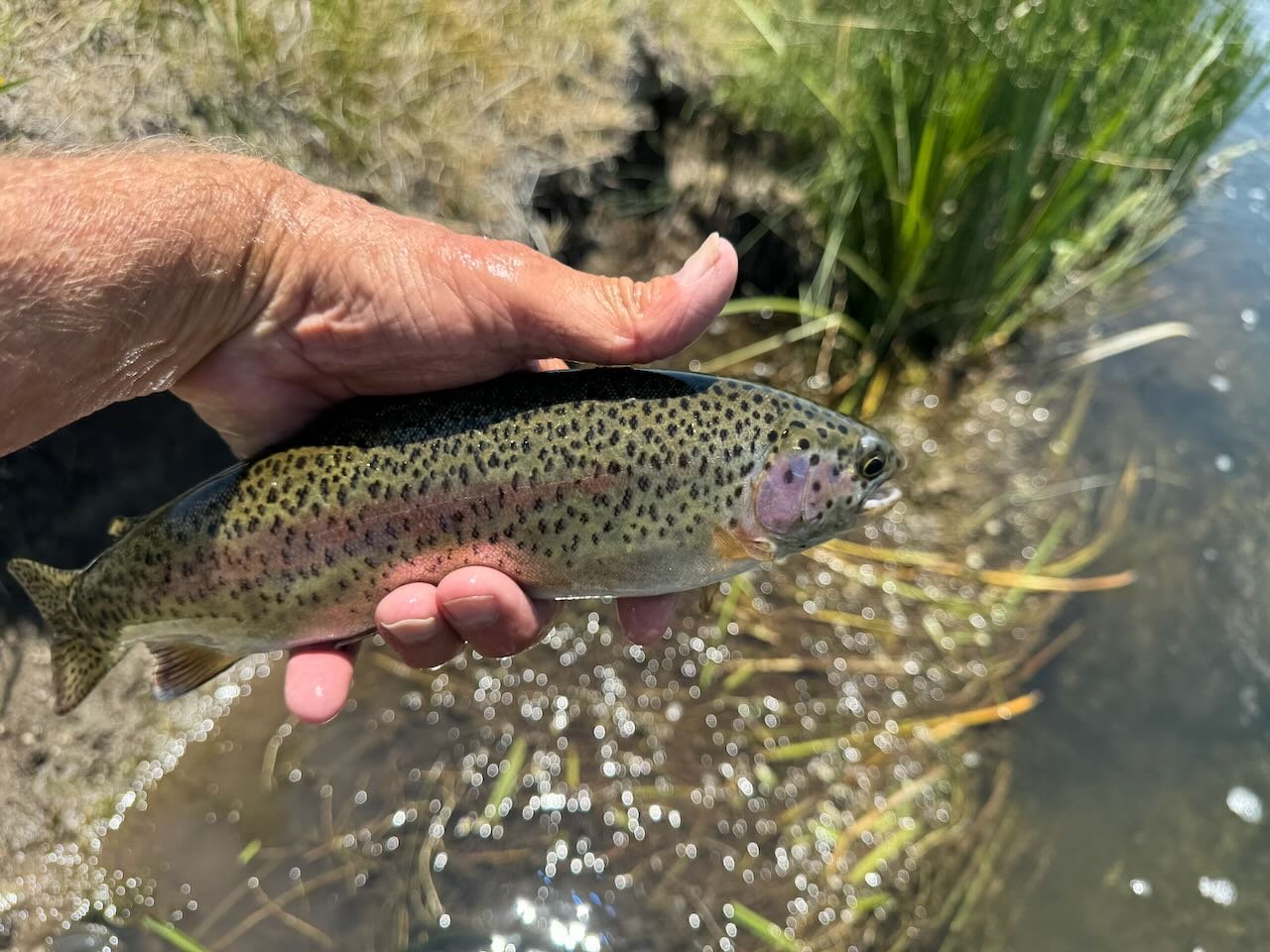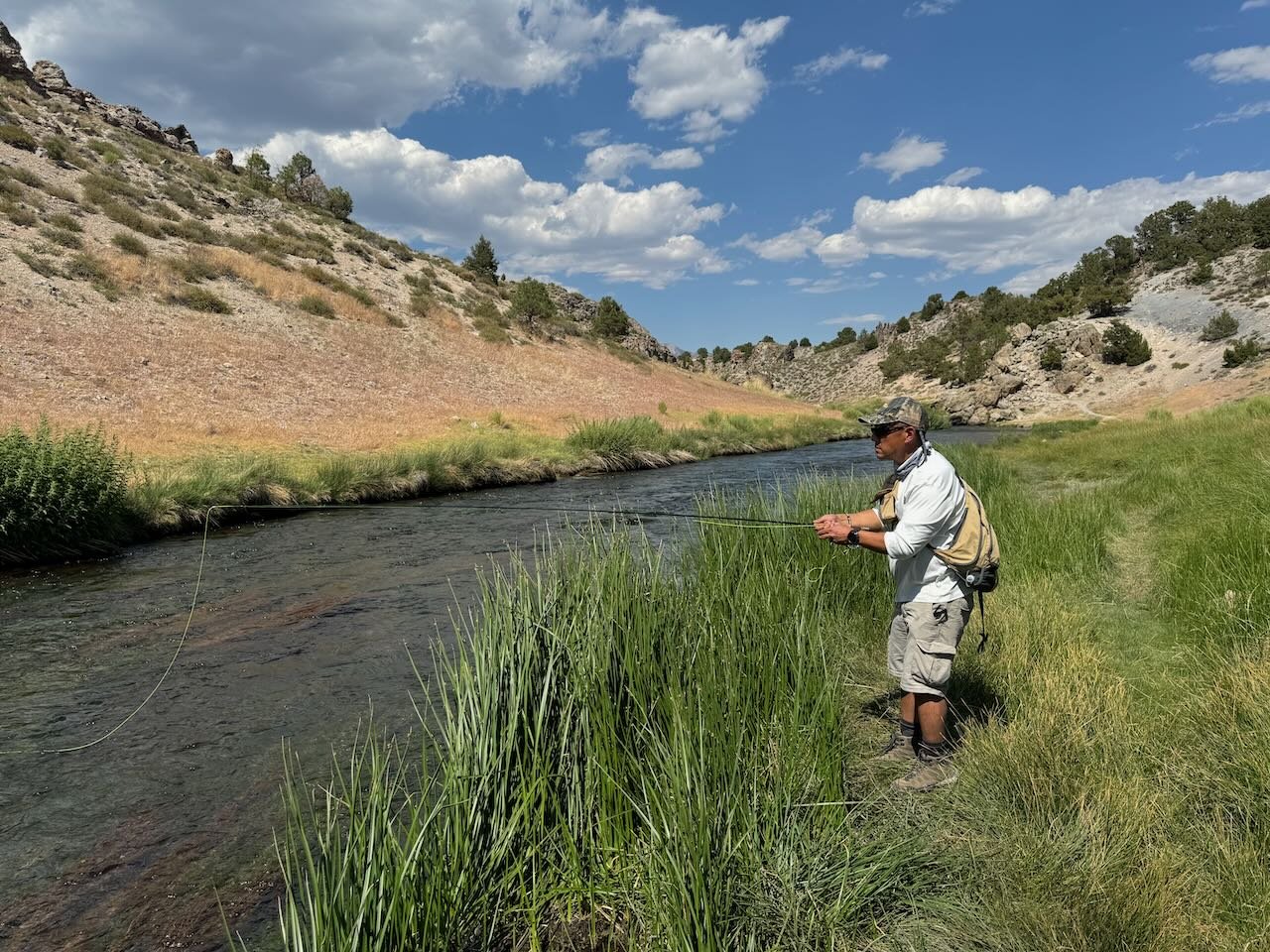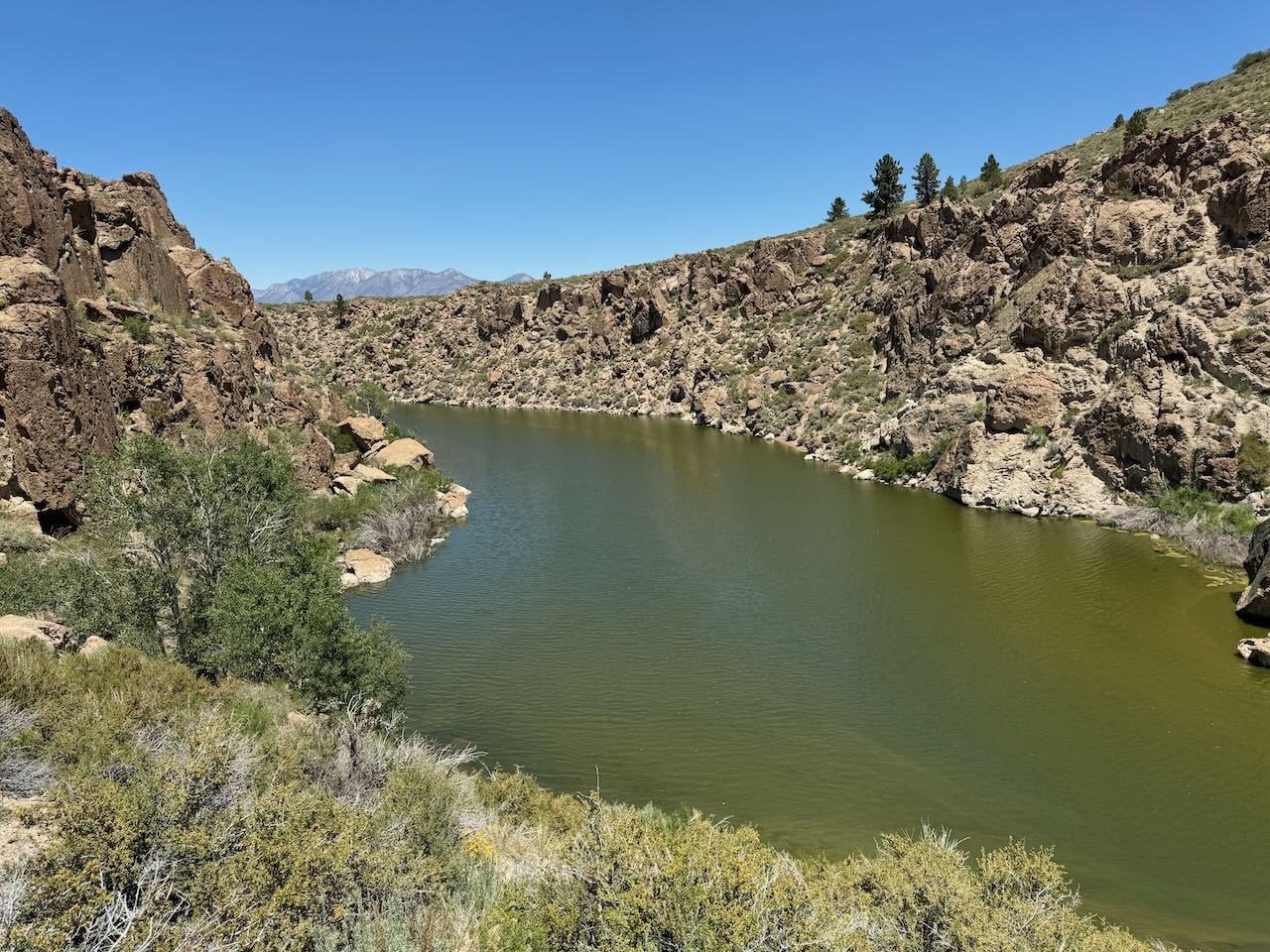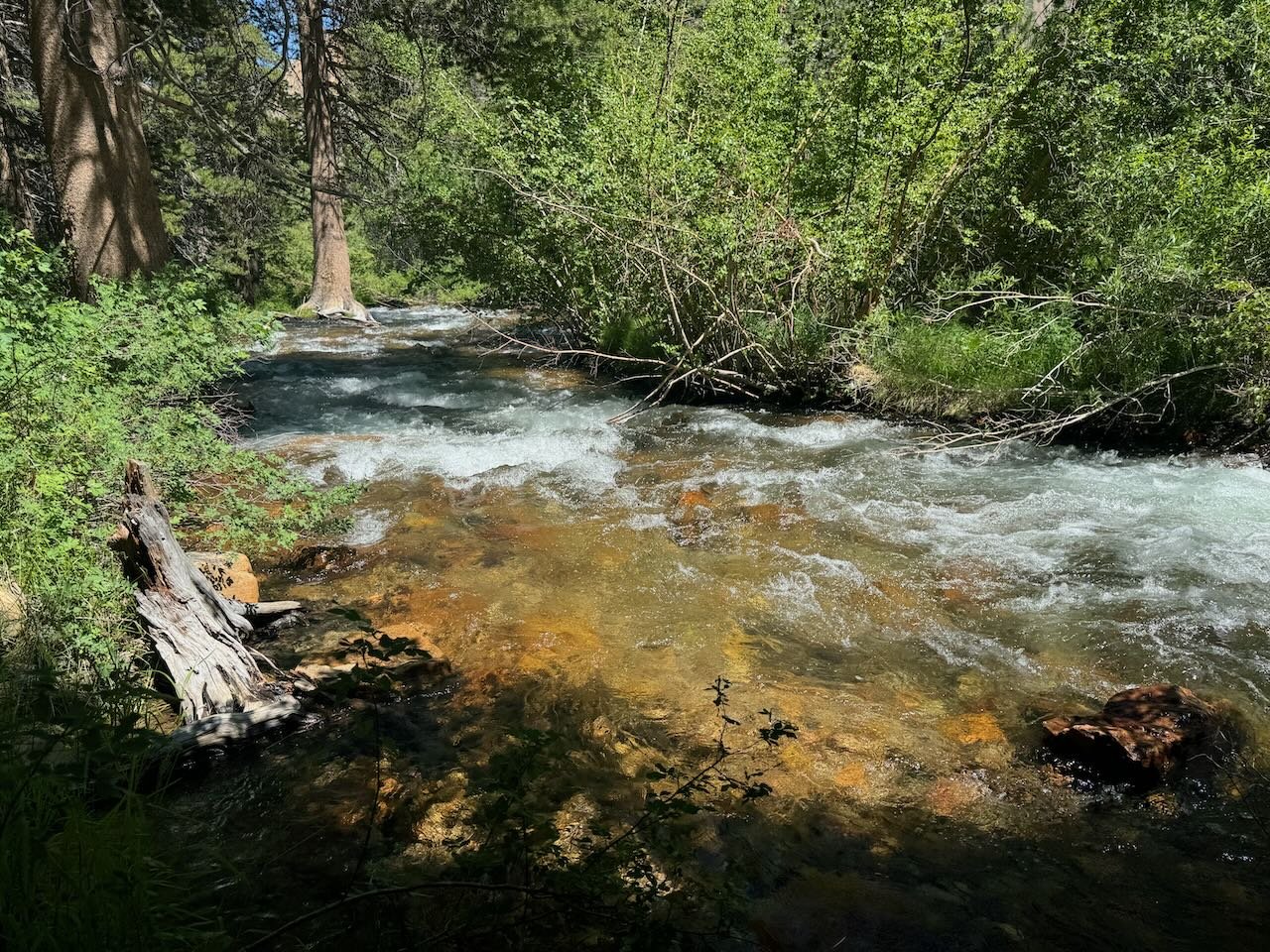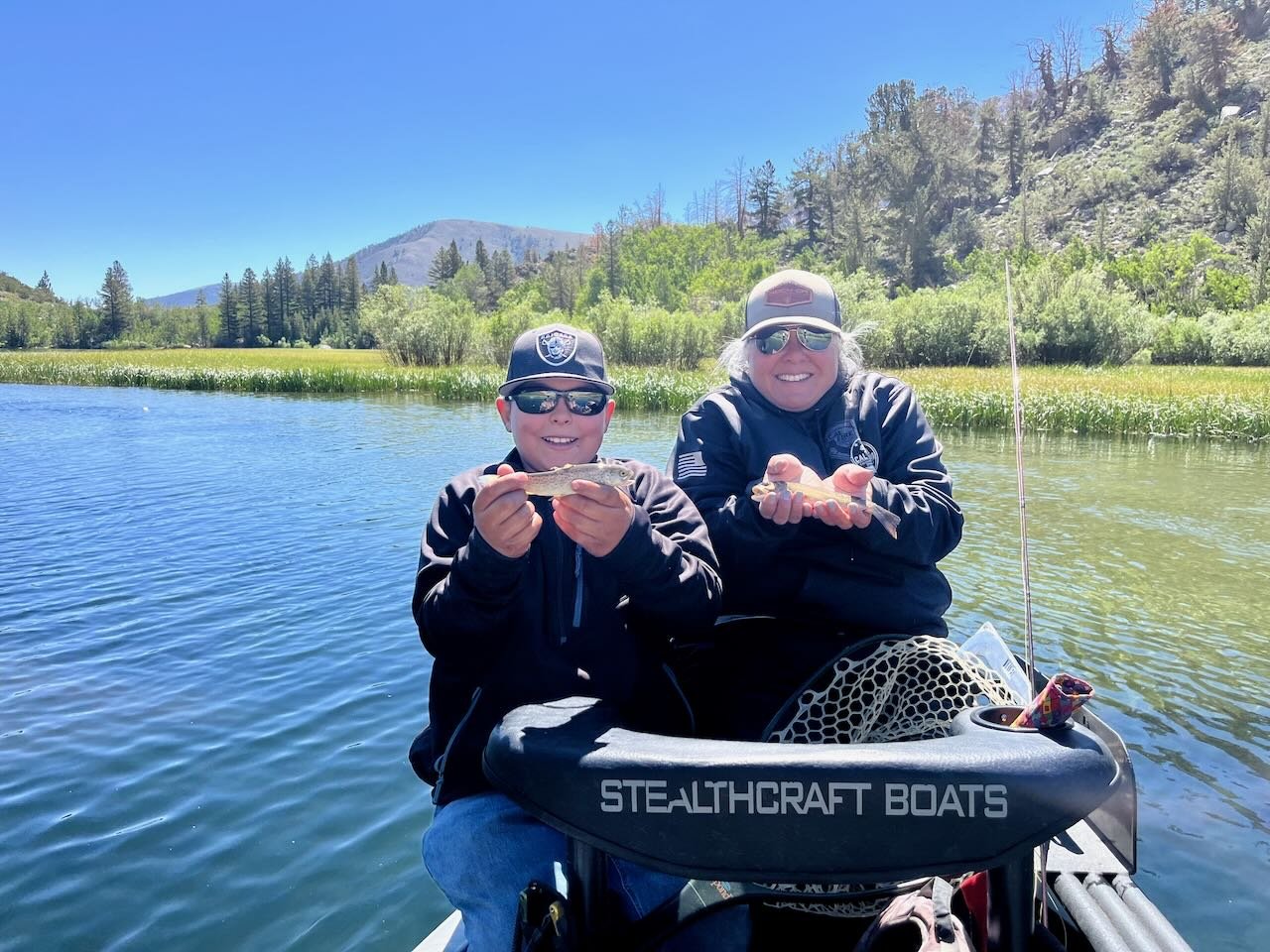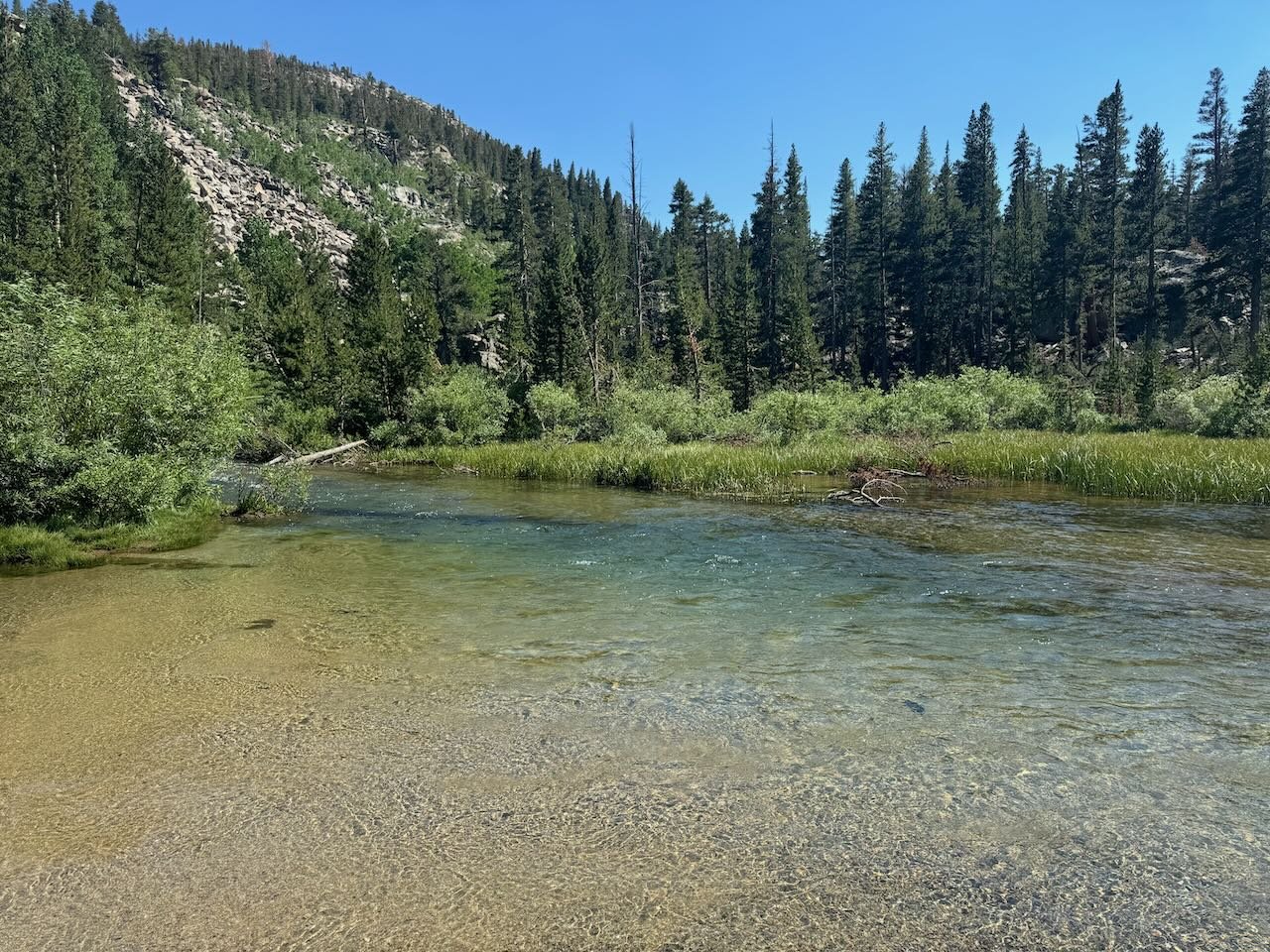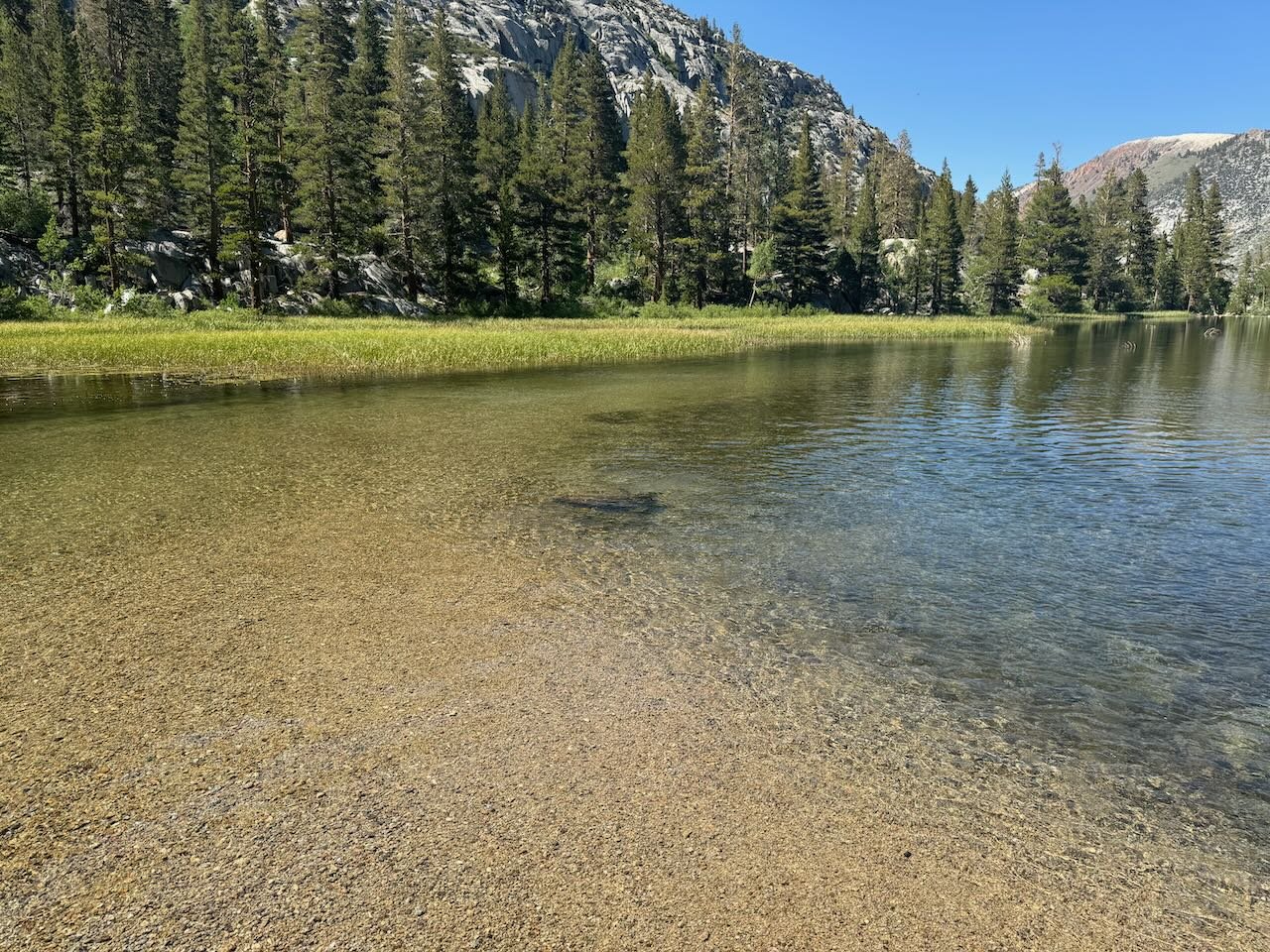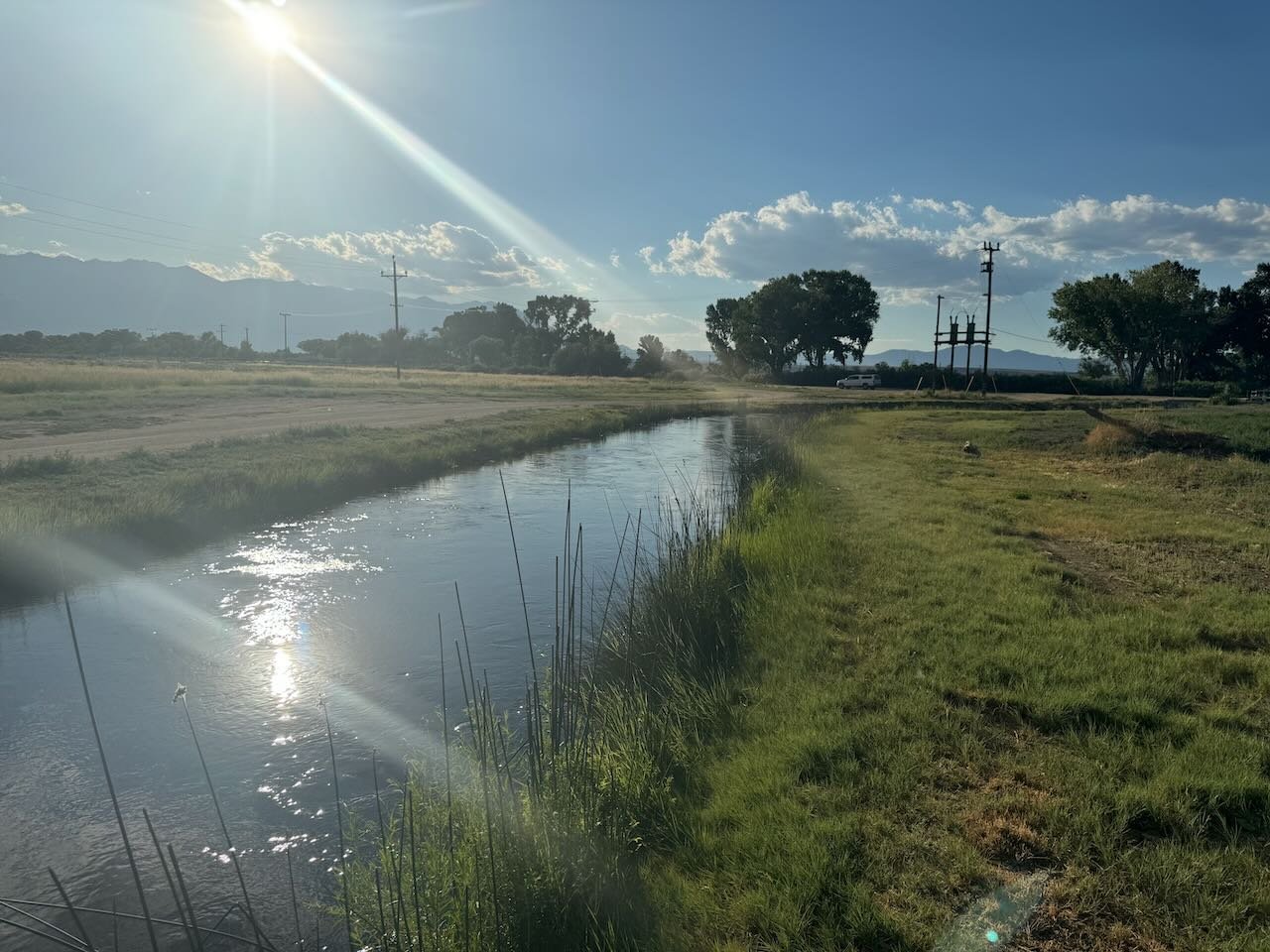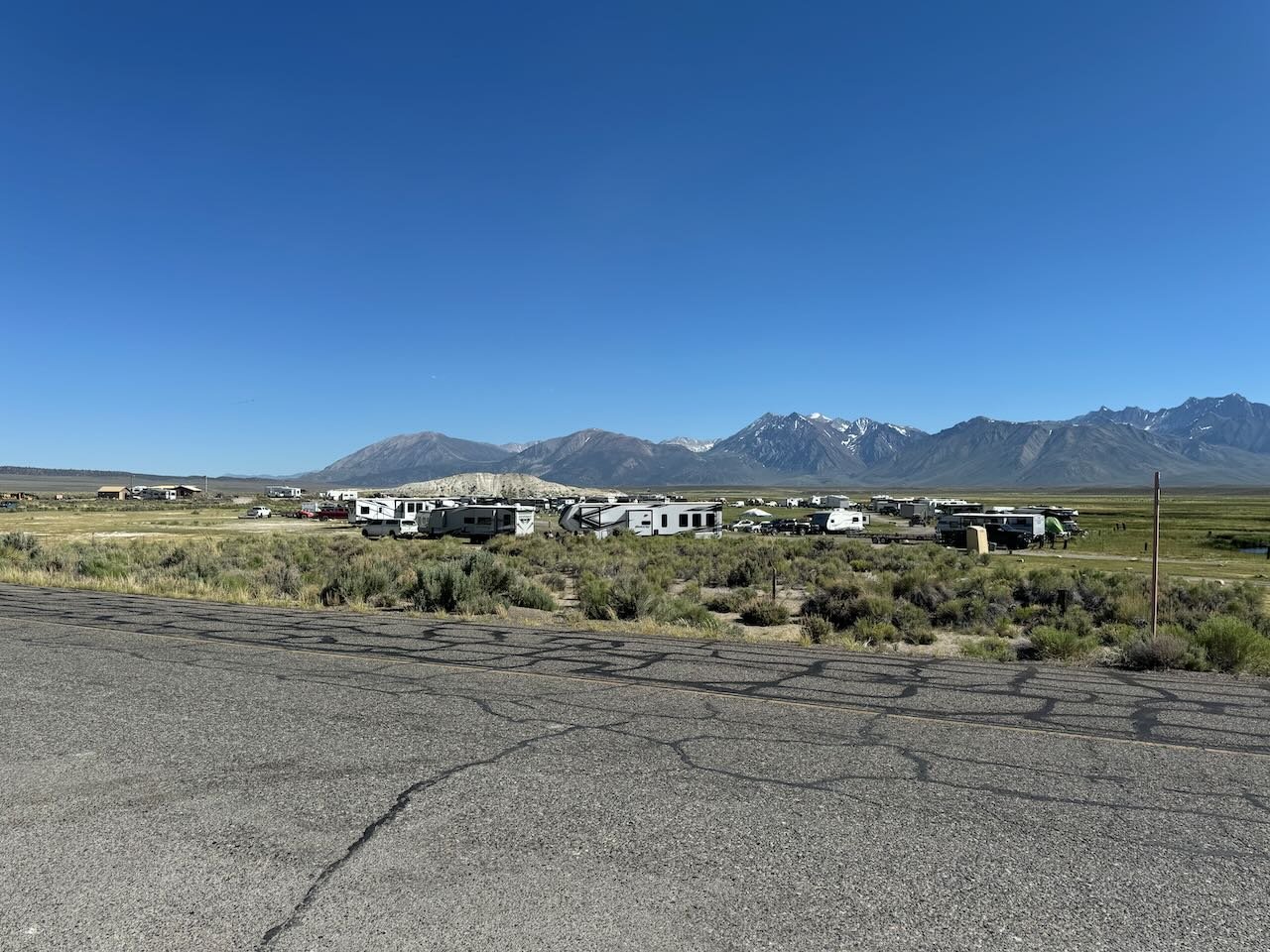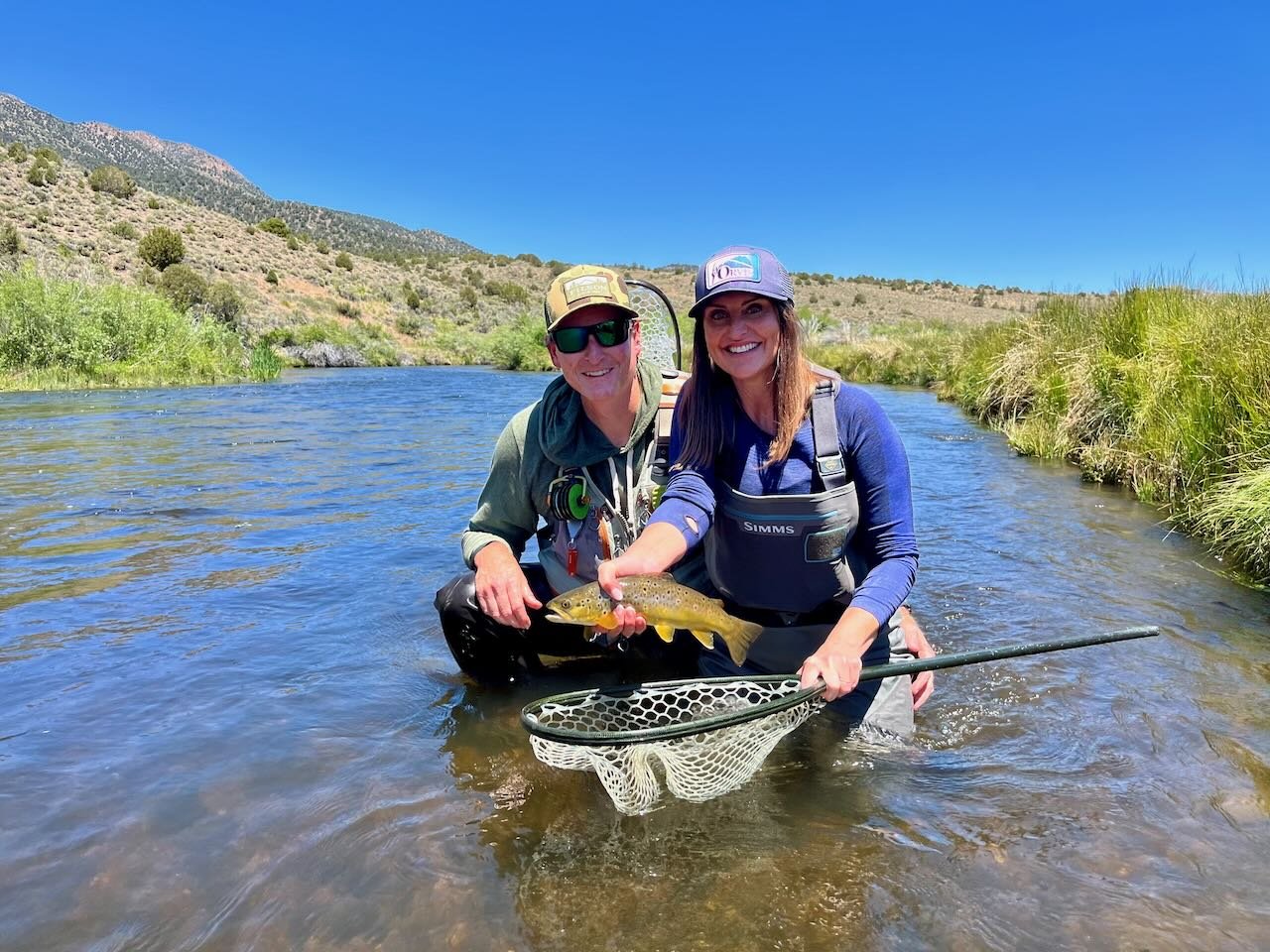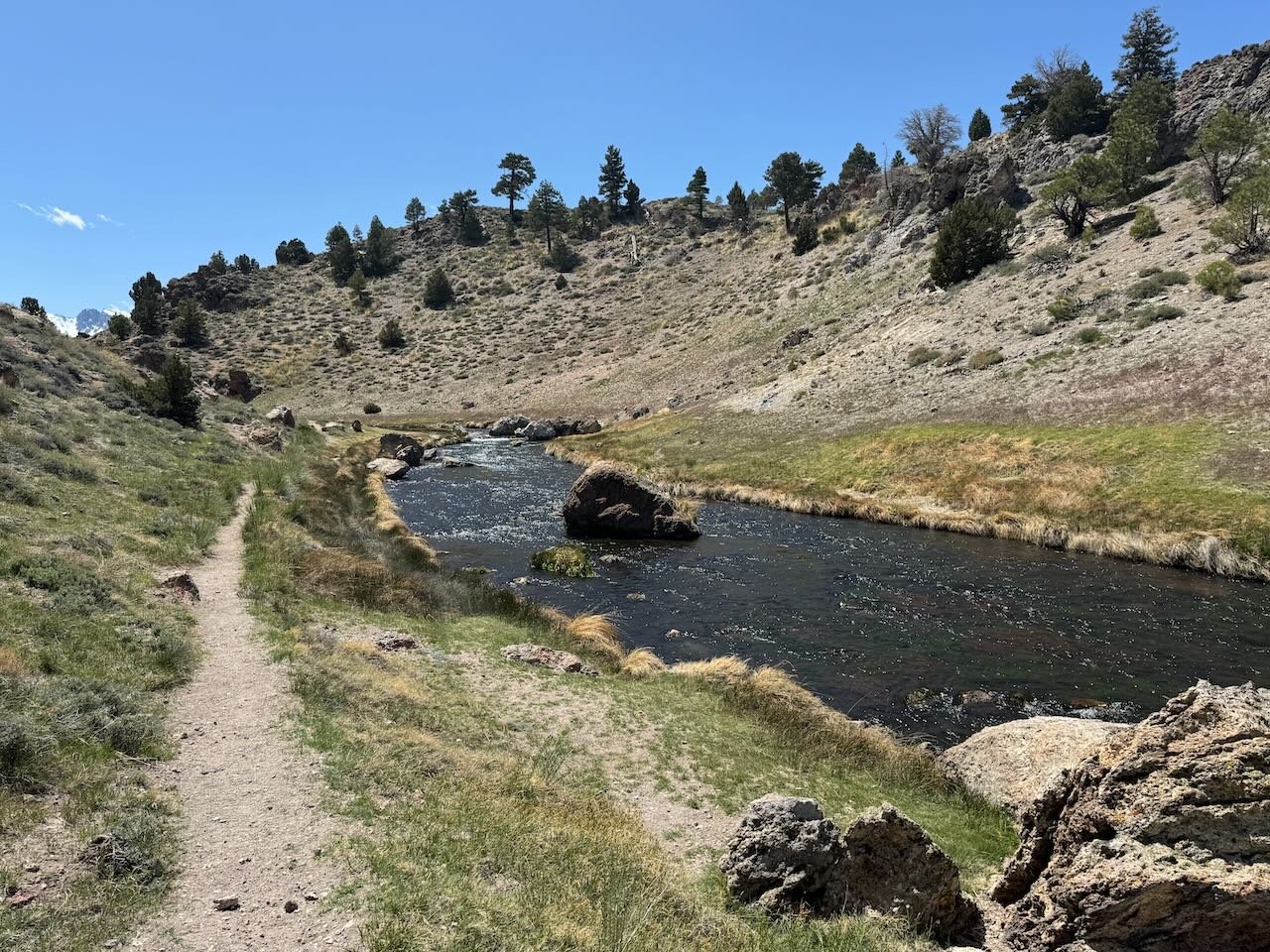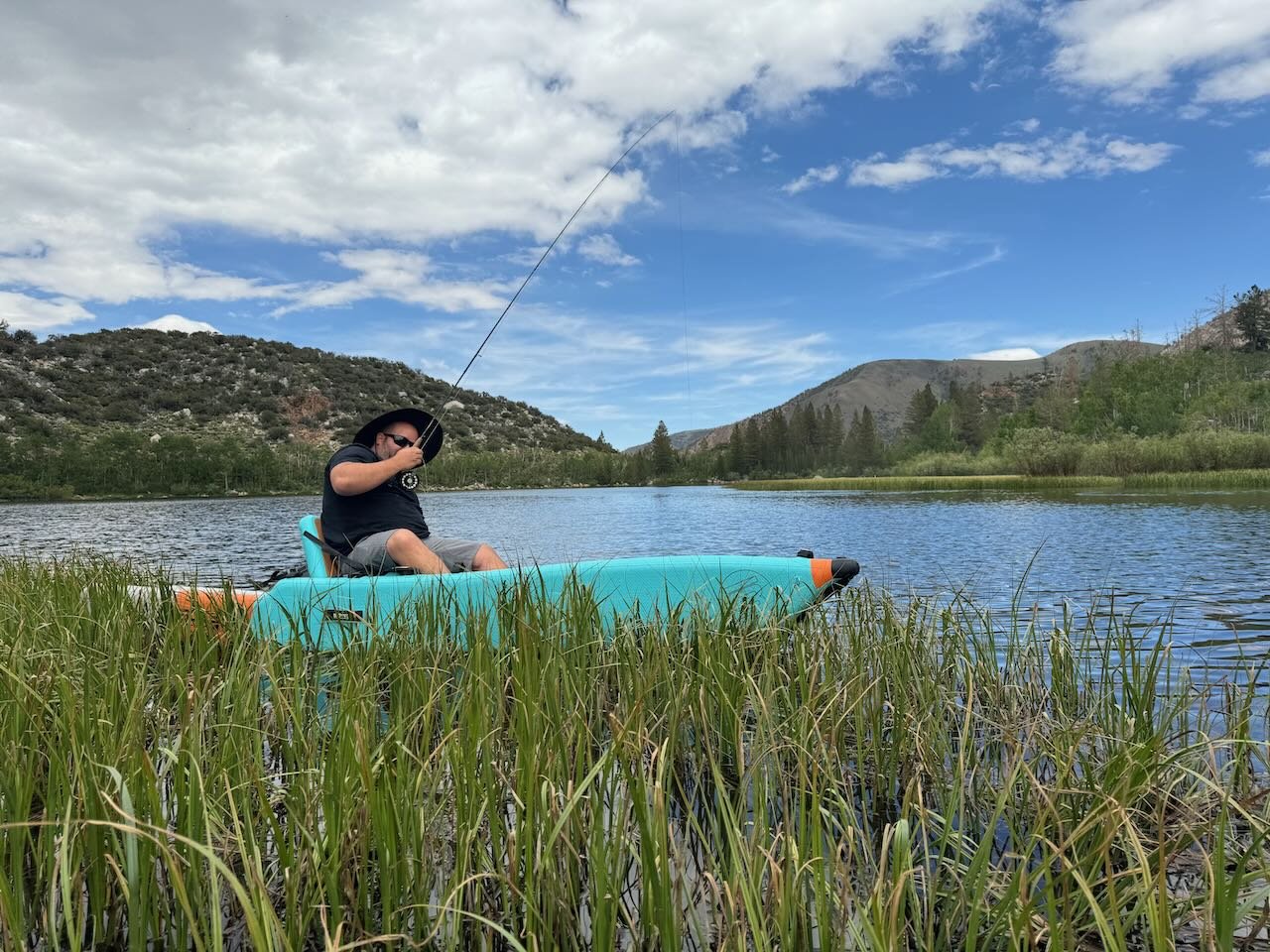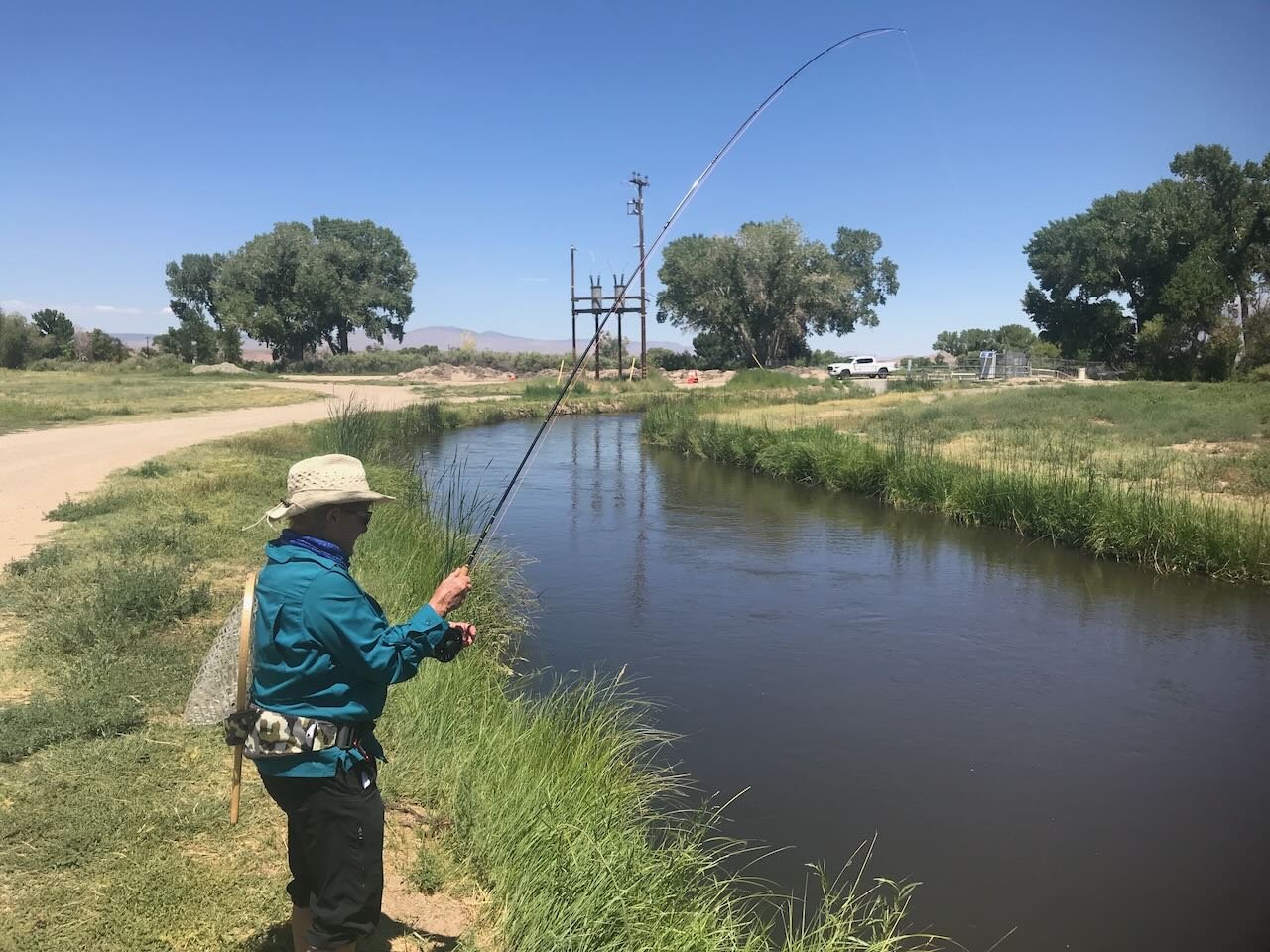Labor Day has come and gone. It’s time to get out there and fly fish the Eastern Sierra. Last weekend was the kids fishing event at the Tri County Fairgrounds. I had two take aways. Every year I do this event it is enjoyable to see kids excited with catching there first fish. This was the first year that several of the kids asked if there was a catch and release option. It was great to realize that so many of the kids that fish are aware of and want to practice catch and release. Eastern Sierra fly fishing is headed into the primetime of the fly fishing season. Think about taking someone fly fishing who has never been fly fishing. Mayflies, caddis and midges are hatching and providing the calories the trout need as they head into winter time.
Helping out the kids catching trout at the Tri County Fairgrounds by showing them how to cast the bait to the trout. Photo by Mike Alexander
Showing off the results of fishing the pond filled with trout by CDFW at the Tri County Fairgrounds over Labor Day Weekend.
East Walker River
Miracle Mile Section:
Just a reminder that CDFW, fly shops, fly fishing guides and fly fishers are recommending no fishing on the East Walker River through the end of this fishing season.
With a major die off of trout from a hypoxic water event on the East Walker River it will be a year or two before fly fishers will have good fishing like we experienced this year.
Hot Creek
Interpretive Site:
Hot Creek trout feed selectively on the insects that are hatching. During the hatch fly fishers need to have the fly that represents the stage of the insect the trout are feeding on. Trico mayflies, blue wing olive mayflies and gray caddis are hatching on any given day and the fly fisher needs to figure out which insect imitation to put on the end of their tippet. Use size 22 trico female parachutes, trico spinners, size 20 bluewing olive parachutes and size 20 gray parachute caddis. After the hatch a few fish can be enticed to the surface with terrestrials. Fish with size 14 foam beetles and size 12 parachute hoppers.
Fall is coming to Hot Creek and soon the weed beds will be dying off and it will be easier to nymph fish in the canyon.
Hot Creek
Canyon Section:
Weed beds influence how fly fishers fish for trout in the canyon section. Nymphing is the most productive method of fly fishing in the canyon. With the weed beds just starting to recede it is still tough to work nymphs without getting hung up on the weeds. Fly fishing with dries allows fly fishers to work the tight seems and pockets around the weed beds with minimal hooking of the weeds. The fish are feeding on tricos, gray caddis and bluewing olive mayflies. Fish with size 20 blue wing olive parachutes, size 20 gray parachute caddis and size 22 trico spinners.
If you can’t get bit be sure to move around to find them trout.
Crowley Lake
Mouth of the Owens River:
The trout are beginning to congregate at the tributaries to Crowley Lake in preparation of their fall migration up the tributaries to spawn. The north arm of the lake is where the flotilla of float tubers, kayakers, paddle boarders and boaters are fishing. Midging in 15 to 20 feet of water over a mud bottom with red midges, albino midges, gray midges, tiger midges and zebra midges from three inches to three feet above the substrate is producing trout. Float tubers and shore fly fishers throwing Sacramento perch fry patterns like olive wooly buggers, olive matukas and balanced perch in and around the weed beds are producing trout. The trout are cruising the weed beds looking for perch fry that have strayed from the safety of the weeds.
Hatches of mayflies and caddis are bringing trout to the surface and nymphing on the substrate is fooling trout.
Upper Owens River
Above Benton Crossing Bridge:
Hatches of mayflies and caddis are keeping the trout actively feeding. On the surface fish with a size 16 elk hair caddis or X-caddis, size 16 Adams parachute and size 18 bluewing olive parachute. For nymphs fished under an indicator or with a Euro rig use size 18 olive quilldigons, size 16 hot spot pheasant tail nymphs, size 12 stoner nymphs, size 14 copper John’s, size 16 bead head flash back gold ribbed hare’s ears and size 18 bead head flash back pheasant tail nymphs and a size 16 SOS nymph. Small and medium, size 6 and 10, black wooly buggers, matukas and marabou muddlers stripped upstream are fooling the trout. There are a few trophy trout in the system and these fish can be found in the deep holes, deep runs and cut banks. To find the few trophy trout cover lots of water to find a fish or two willing to take your flies
The cottonwoods along Bishop Creek Canal are showing a little bit of yellow in there foliage and trout are feeding on trico spinners in the mornings.
Bishop Creek Canal
Behind Bishop Veterinary Hospital:
There was lots of fishing pressure on the canal over the holiday weekend. Temperatures have gone back up into the upper 90’s and low 100’s. That’s too hot to fly fish in the afternoons. There is a trico hatch coming off in the morning. The trout key in on the spinners. The spinner fall is taking place in the early morning between 8:00 and 9:30ish. This hatch is over in less than an hour. Fish with a size 22 trico spinner on a 5X tippet. Target rising fish and make sure you time the float of your fly to the rhythm of the rising the trout. After the trico spinner fall head up the hill and find a cooler place to fish the rest of the day.





